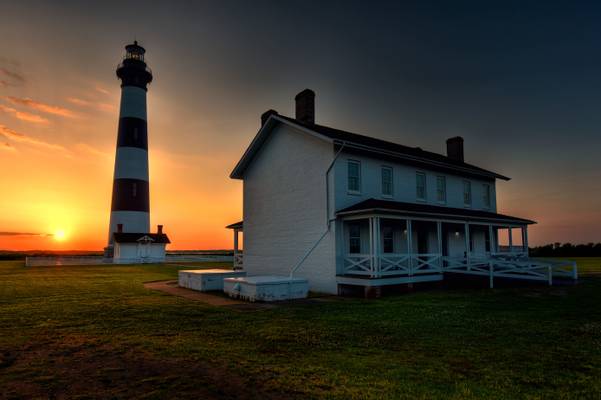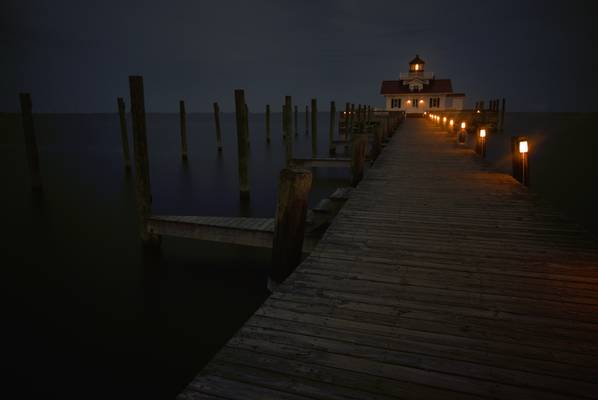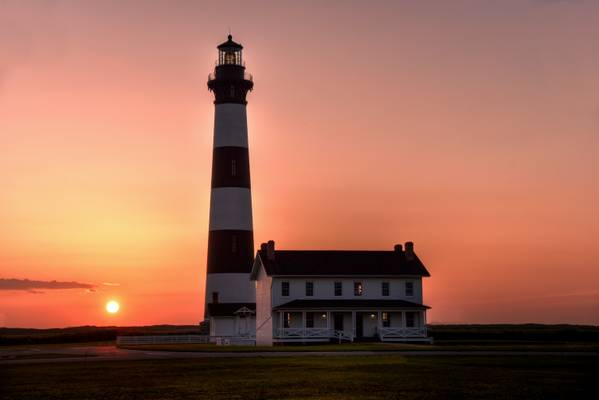
North Carolina
North Carolina is a state located in the southeastern region of the United States. Known for its beautiful beaches, stunning mountains, and rich history, North Carolina is a popular destination for photographers looking to capture the beauty of the American South. From the picturesque Blue Ridge Parkway to the charming coastal towns of the Outer Banks, North Carolina offers a diverse range of photography locations. The state is also home to several national parks, including Great Smoky Mountains National Park and Cape Hatteras National Seashore, which provide endless opportunities for landscape and wildlife photography.
Photography regions of North Carolina
Photography of North Carolina
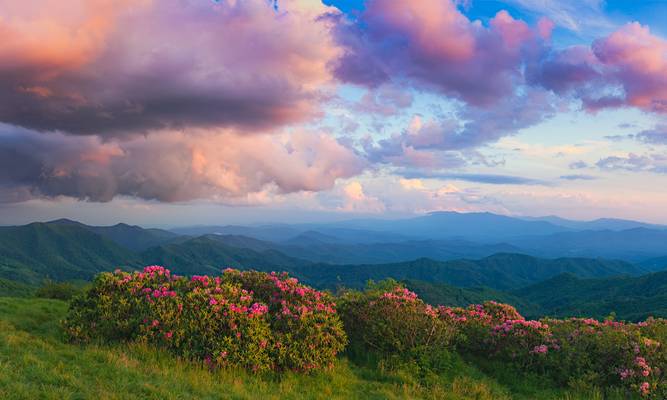
by Michael Kight
I'm about an inch shorter than I was last Wednesday. I hiked my legs to nubs over the last few days in an attempt to put everything beautiful around Roan Highlands before the lens... and loved every minute of it! The problem was that everything was beautiful, but that's a nice problem to have. It's easy to understand why so many photographers make this pilgrimage each year for the peak of the rhododendron season.
There's nothing quite like the splendor anywhere along the trail from Carver's Gap to Grassy Ridge... but it's not just about the view. The terrain can be challenging at times, which gives you a sense of accomplishment. There's also a combination of flora enough to keep a botanist busy for a lifetime... Roan’s ecosystem, comprised of 27 rare natural communities, nearly 800 plant species, 6 federally listed species (spreading avens, Roan Mountain bluet, Blue Ridge goldenrod, rock gnome lichen, Carolina northern flying squirrel and spruce fir moss spider), and over 80 southern Appalachian endemic or regionally rare species, is one of the richest repositories of temperate zone biodiversity on earth. And then, there's the folks you meet along the trail.
It's a pleasure being around those who are seeing this place for the first time... I'm excited for the joy and wonder that they experience here... there's a beauty in that, too. I met some older women, some likely in their late 70s, who had managed quite well the hike onto Grassy Ridge Bald last Saturday morning. They stopped along the trail to inquire about a plant... they were excited that it turned out to be a rare Gray's lily that had yet to bloom (see one here from friend Keith Clontz that looks suspiciously like the 3-bud flower we saw, taken the same day www.flickr.com/photos/55226137@N05/7358413098/in/photostream). They didn't seem concerned for what others thought, or what others were doing... with hand-hewn walking sticks in hand, they had managed the somewhat arduous trek up, joyful just to be there and living life, not as "old women", but as people with a dignified spirit... beautiful! "Paradoxically, striving for possessions and money, the things we think will bring us pleasure and happiness, actually strips the meaning from our lives....What we truly long for isn't boundless riches. What we desire is a sense of significance and value - of human dignity." - Chuck Colson
Here, the clouds contend with the magnificence of the Catawba rhododendron as a low sun punctuates the end of the day last Thursday evening on Jane Bald... but some beauty in this world is just way too big for the camera.
By the way, I made a new friend at Roan... she's new to Flickr. Drop by here www.flickr.com/photos/49592464@N03/ and give Sheila a big welcome... and see some more images from the highlands!
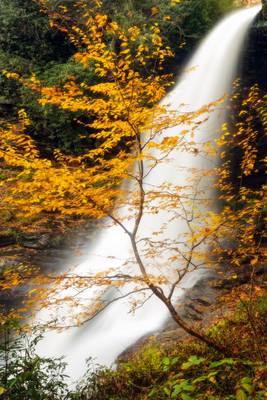
by Michael Kight
This cherry tree is at the end of the trail at Dry Falls. Dressed in its autumn finest with Dry Falls as a backdrop, well, that's pretty sweet to me. There are still a few trees here in Durham that look like this, though I would imagine all the fall color around Highway 64 near Highlands where this was taken is long gone. It's quite cold today, which is the way it should be, something to get us into the mood of Christmas. I've got what smells like will be a wonderful Irish beef stew in the Crockpot... just right for a day like today, and I'm working on some other recipes for coming events, but there's also time for sorting images from this fall. I can hear you now, "That was a whole 'nother season ago, Mike!" I know, I know, yet Christmas is as good a time for reminiscing as any, isn't it? I hope it's a sweet time for you, too, this year. Let's get to it with cheer!
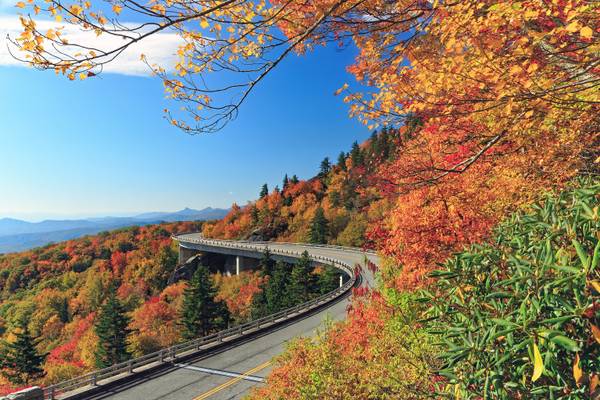
by Michael Kight
Perhaps you saw my image here www.flickr.com/photos/snapdraggin/30494945821/in/datepost... of Grandfather Mountain. It points out many things, not least of which is the Linn Cove Viaduct… it’s one of the most famous stretches of road anywhere, which is quite a feat, as it is found along another famous road, the Blue Ridge Parkway. Until the viaduct was completed in 1987, the Blue Ridge Parkway was effectively unfinished. Hugh Morton, who owned the mountain at that time, would not allow cutting into the side of the mountain to complete the road… you had a rather long detour to reconnect going either north or south along the parkway. The Linn Cove Viaduct was the answer to that problem, as it was minimally invasive to the mountain causing no damage whatsoever to the ecosystem of the mountain wilderness. The complex span of nearly a quarter-mile across involves two turns of tight radius, so tight in fact, that it took a powerful computer and 1,500 pages of specifications to get it right. At his death, Hugh Morton willed the mountain to North Carolina. It is now a state park.
This was taken from the ideal spot for the most iconic view of the viaduct, a rise of rocks on the north end of the viaduct. It’s a steep, though short climb to a precarious perch on those rocks, but it’s well worth the effort. I’ve worked my way up there for years (even at night, as seen here: www.flickr.com/photos/snapdraggin/21874790584/in/datepost...), but for one reason or another, I never quite got the shot I was after… until now. I’m so happy about that, as I don’t have to climb up there anymore… yeah, right.
Grandfather Mountain is quite a rise over its surroundings, as you can see here. Much of what you see in the distance, is the escarpment that surges up to the highlands. The two sharp rises that can be seen above the end of the viaduct here are quite iconic, too… Table Rock is on the left, and Hawksbill Mountain is to the right. Just the other side of them is Linville Gorge. There’s a lot to be explored here… but you still might find me sitting on these very rocks next year. There must be a way to top this shot, after all.
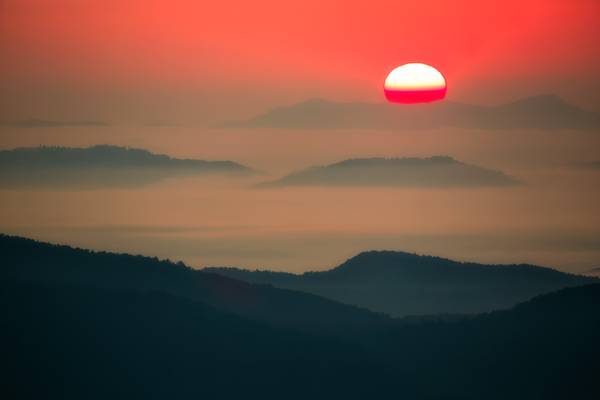
by Michael Kight
In a previous post, I explained why a “blood moon” eclipse is tinted red… this image of a sunrise might explain it a little better. This was taken at the East Fork Overlook at milepost 418.3 along the Blue Ridge Parkway. On the tripod, the camera was at an elevation of nearly exactly 5,000 feet… that makes the horizon where the Sun popped up roughly 85 miles away from the lens. This was shot fullframe with a 400 mm lens, so the distance is compressed, but it shows the effect of denser atmosphere concerning the penetration of sunlight.
Officially, according to the European Space Agency, Earth’s atmosphere extends to 60 miles straight overhead. The atmosphere consists of gasses, mostly nitrogen and oxygen, water vapor, and dust. On a clear day, sunlight when the Sun is at zenith is not merely white but scattered throughout the color spectrum. The reason a leaf on a tree is green is because that leaf absorbs all wavelengths of light except green, which is reflected. The sky is blue not because it’s reflecting blue, but rather that it absorbs only blue light and is transparent… of all the colors, blue has the shortest wavelength of visible light. All the longer wavelengths just shoot right through.
Looking directly to the horizon as in this image, the depth of the atmosphere is nearly 145 miles… more atmosphere absorbs more light, yet the longer wavelength of red light easily affects the visible light of this sunrise. The red band on the Sun is due to a layer of vapor in the distance which scatters just about all visible light but red. Red pouring off that Sun sitting on the distant ridge looks quite like a beacon… it’s bright enough that the fog between mountaintops is reflecting it a bit. Other than evident vapor in the air to the east, there was no cloud cover in that direction on this morning. There’s a steep cliff to my back as I shot this, so I couldn’t tell about cloud coverage in that direction… but if there were clouds in that direction, they would have reflected the deep red light apparent here, and perhaps even more as they would be even further from the horizon. I hope this makes sense.
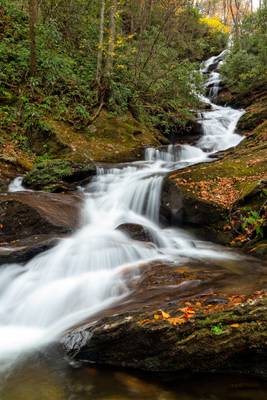
by Michael Kight
Roaring Fork is a little stream that finds its source along the heights of the Black Mountains. The green of rock moss, rosebay rhododendron, and dog hobble give this the appearance of being tropical, though autumn is evident here.
The falls starts about 50-feet above here, where the placid stream descends steeply and loudly over a series of rocky drops to the pool where I'm standing. This is the most water I've seen here, despite the fact it hadn't rained for over a week.
For the most part, Roaring Fork is such a gently quiet little creek, yet here it makes its name evident in a wild and most beautiful way. Most images I’ve seen of it appear quite flat, because of issues with lens perspective, which is out of character of the true nature of this waterfall... its heights are part of its majesty, and I hope I’ve made that apparent here.

by Michael Kight
This moment was one like many in my life behind the lens. I’m torn between camera settings, composition, and environmental factors… and just sitting there to try and breathe it all in. After a brief pause, I realize it’s just as well to get back to the business of translating this scene into an image… otherwise, I might try to comprehend such magnificence, and that would be no less than an exercise in futility. Besides, there are steep rocky cliffs here, so it’s best to keep your head out of the clouds. Even that may not be possible here, however.
Minutes before this scene opened to this glory, my head was in the clouds… literally! I arrived here late in the evening. I had attempted to get here much earlier but one thing or another kept me grounded in Durham. About the time I could square every hindrance away, Joyce was getting off work at the hospital… we decided to go for a quick dinner before I left, effectively assuring an even later start, though joyfully so with her. We ate at a place just off the interstate which gave me a quick launch toward the Blue Ridge Mountains after we parted. It was dark by this time, which gave me a good indicator what I was heading into… the unmistakable shape of a thunderhead was in my path. Rising high over the horizon, it was lit from within like a light bulb against the night sky by its furious energy.
Ten miles further west had me well into the throes of that storm. It was like driving in a flood, but I knew this road and I knew my car… it wouldn’t slow me down much! Or so I thought. Ten miles more up the road, the driver’s side windshield wiper decided to eject… for crying out loud! “What else can happen?” I regretted those words the instant I said them… the day had proven that anything else could happen. Fortunately, there was a 24-hour Walmart nearby that had the right blades. I changed them both, in the rain, and had no more incidents for the next three hours. I rolled into the parking area for Hawksbill Mountain in the Linville Gorge Wilderness past midnight… I set the seat back, snugged my jacket up, and snoozed for a few hours.
Waking at 4 AM was a bit disorienting… even in the darkest nights, I'm able to see something outside, but I couldn’t see anything out the windows! That’s because a cloud had parked itself right over Hawksbill. My friend, Paul McKenna, taught me a song many years ago when we were involved in camp ministry, that he had learned while a student at Virginia Tech… “We’re Here Because We’re Here”... That's the entire lyrics, sung to the tune of Auld Lang Syne... give it a try and see if you can get it out of your head. That was my song on the somewhat discouraging dark and foggy hike up to the crest of Hawksbill... there are bears, bobcats and coyote up here, and I was alert for bumping into something that might try to eat me... no worries, though, as my singing likely kept them at bay. It was still socked in when I reached the top… as it began to lighten up with the coming morning, I investigated what compositions might work out best given the conditions. There are some of you who know that you just don’t flit around that location… Hawksbill is steep in many places at the top, and I’ve seen more than a few people ‘crash and burn’ up there on the slippery rocks… I’ve never laughed out loud at those antics, but I’ve wanted to because I had warned many of them about the conditions… “Told you so!”
I tend to my footing up there, especially because I’m carrying heavy gear… but on this day, as I moved from one side of the “bill” to the other, I slipped on the steep rock! Instead of falling, however, I quickly adjusted my balance, planted both feet, and only slid until I found grip again on the rocks… after all I’d been through the previous day, I was happy for an incident averted! As I made my way to the place in this image, wind from the warming morning pushed the cloud off the mountain… and in nearly the same moment, a veil opened to the east revealing a shimmering curtain of sunshine! I quickly set up the camera, set the ISO up a bit to account for the wind (the landscape photographer’s lament), and prayed for the wind to stop… and it did… so come on morning!
There’s a lesson here… no matter your situation, motivation isn’t what should drive you. “We’re Here Because We’re Here” is motivation enough to put one foot in front of the other, but it’s discipline that drives you to stay at it until you get what you’re after. It’s all about discipline… you keep going regardless of conditions. You push through even when it seems everything is against you. And it doesn’t always pay off… but when it does, it can be remarkable. Sometimes it’s a rough and rocky road that takes you to a beautiful place… “Come on morning” is my rallying cry to stay on point, even in the worst of moments.
This image is a progression of my recent posts of the rhododendron of the Blue Ridge. This is the Carolina rhododendron that, while rare in this world, is found in abundance here at Linville Gorge. It blooms earlier than the other rhododendron… and unlike the Catawba and rosebay rhododendron, it is a true pink, though even that may be a misnomer. Scientists seem to believe pink is not a true color… pink would be a combination of red light and violet light, tempered by white light. The problem is that red and violet are at opposite ends of the color spectrum (remember ROYGBIV) and do not converge in any way whatsoever! Well, that is unless you’ve seen rainbows bent like pretzels. Apparently, the light reflected off pink objects is somehow twisted in our minds to reveal pink. So, if you see pink here, then you and I are either delusional or we’re prone to wishful thinking… either way, we can still be just as happy. See? Two lessons in one post… you got your money’s worth!
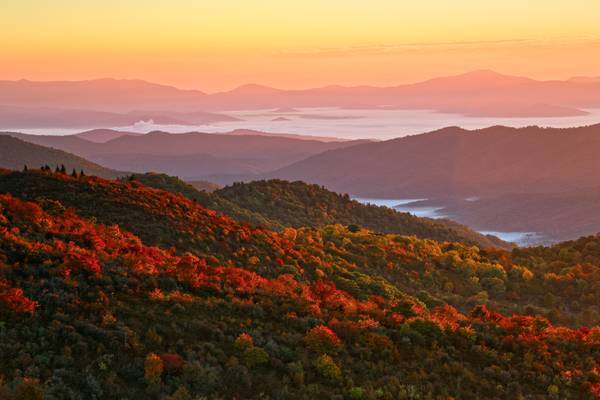
by Michael Kight
I don’t know about you, but “coming attractions” often generates more excitement than the actual event. While going over some images of past forays into the Blue Ridge, I came across some like this that I overlooked at the time. This process helps me to set my mind to the places I would love to set the camera in front of… again. This is from 2015. I spent a good two weeks putting in the footwork necessary to get ‘the shot’ but the morning weather rarely provided what I was hoping for… just open blue skies with no clouds to reflect the dramatic color phases of a rising sun. Sometimes, however…
Have you ever had folks to tell you that it’s just another sunrise? I have, and I believe they’re missing the miracle of it. I arrived at this spot while it was still quite dark, not too particularly thrilled with the evident coming “blue” day, but prepared to take it on nonetheless. Yet, there was just enough humidity in the air to make things interesting. One of the reasons for light is to expose what lays in the dark… I watched as the sky became brighter with the rising sun and the mountains and clouds like billowing seas covering the valleys began to take shape. The first golden touch of sunlight fired up the autumn palette of mountain ridges and muted the open horizon like a delicate watercolor painting. It added depth, contrast, and definition to turn these oh so familiar mountains into an ever-changing wonderland… and did so much to reset my attitude for that day and the days ahead.
The “coming attraction” for many in this region of the world is the promise of autumn here in these mountains to showcase what the light exposes… that palette is a marvel, but so is the brilliance that highlights it.
Ephesians 5:13, “But everything exposed by the light becomes visible – and everything that is illuminated becomes light.” That’s yet another coming attraction for an event that I guarantee will not let you down. The recent death of a dear friend whose memorial we attended Saturday brings this to the forefront... he loved these mountains as much as I do.
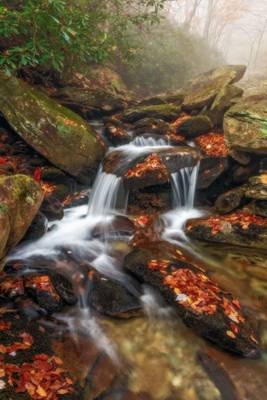
by Michael Kight
I’m not really chomping at the bit for autumn already… or am I? Fall, when conditions are just right, turns these mountains into something quite magical… especially when you can get a little fog action here at Boone Fork Creek. Being somewhere between 4,000-5,000 feet in elevation, the “fog” here is more aptly clouds after a storm swept through.
I’ve been going through many older images… and wondering why I’ve never posted some of them. Boone Fork is always a favorite place, especially when fog is present… to me, it adds a layer of beauty to the image and makes one wonder what’s seemingly out of reach. Though it can be accessed from many points of the Tanawha Trail, the best access point here is the Boone Fork Parking Area at Milepost 299.9 along the Blue Ridge Parkway… and the only way to truly hike the creek is by getting your feet wet.
The creek is situated between two steep rises in the Grandfather Mountain Highlands… the best way to hike it is by getting your feet wet. The creek bed consists of huge rocks that have tumbled from those rises throughout the millennia. The creek, which originates from the top of Grandfather Mountain, finds a path of least resistance through those rocks, often by little drops such as this one. With some of the purest and clearest water anywhere in these mountains, the air here is also is quite clean, particularly after the passage of thunderstorms. Though often I’m busy with the camera, I take the time to just soak in the natural beauty here… it is a place of reverie!
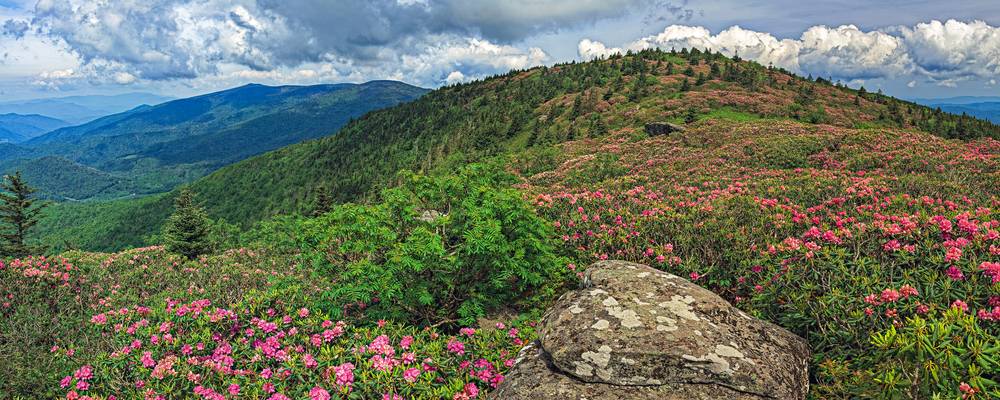
by Michael Kight
Having posted the cloudy version of Grassy Ridge two posts back (titled "Rhododendron Hells"), it occurred to me I had never posted this image from 5 years ago. The original is a composite image of 9 vertical shots that is 72”x24”, though with detail that could make it larger if necessary… I’ve pared it down using the same aspect ratio to 60”x20” that drops the printing costs of an exhibition metal float print somewhat exponentially.
Grassy Ridge Bald is the longest stretch of grassy bald in the Roan Highlands area of the Appalachian Mountains. You will never see this roadside… seeing it requires a hike starting from Carver’s Gap, located on State Route TN-143 and NC-261, which connects the towns of Roan Mountain, Tennessee, and Bakersville, North Carolina... you park on the state line! The Appalachian Trail winds its way through Roan Mountain State Park… it is along this trail that you begin to work your way up until it intersects a spur trail at the boundary of Grassy Ridge Bald nearly 2 miles from Carver’s Gap
Roan Mountain has five sub-peaks that comprise the Highlands and is divided into two sections by Carvers Gap. To the west of Carvers Gap are Roan High Bluff and Roan High Knob that are easily accessed by road as well as trail… the world-famous Roan Rhododendron Gardens that are handicap-accessible. That’s a wonderful option for those who have a hard time getting around… but it’s hard to beat the view from Grassy Ridge. East of Carvers Gap, accessible only by hiking, is the area of Roan Mountain known as Grassy Ridge, which includes three peaks: Round Bald, Jane Bald, and Grassy Ridge Bald. At an elevation of 6,189 feet (1886 meters), Grassy Ridge Bald is one of the highest grassy balds in the Appalachian Mountains.
There’s a lot to see on the trail to this point and you get many different perspectives along the way… the hike takes a little over 5 miles straight up and back, with a total elevation gain of 1,150 feet (350 meters). My hikes there are never less than 8 miles round trip and often more as I move around for those perspectives to put in front of the lens… but this place is the jewel at the end of the trail. To get this image required scrambling up the huge rock you see in the foreground to get above it all. While this would make a wonderful print, I've not caught the quintessential shot I've had in mind of this place just yet... it's been too windy, or too cloudy/foggy, or the light's just not right, or I'm too early or too late for peak conditions... or worse, any combination of these conditions. I guess I'm just going to have to keep making my way up there until I get it. I'm just kidding myself... even if I did get what I think I want, I still would never be satisfied. Would you?
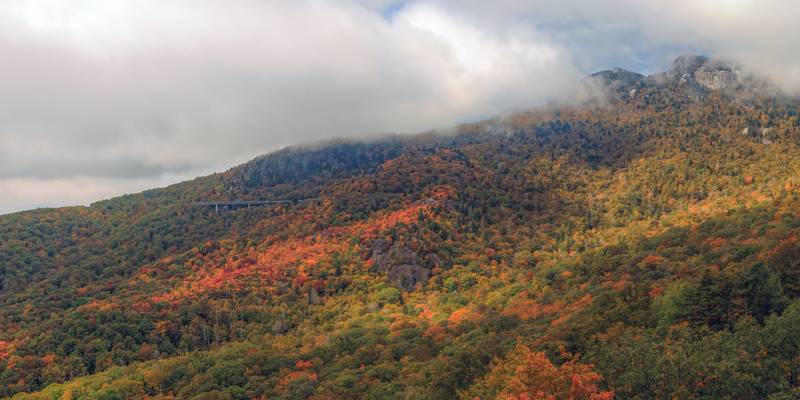
by Michael Kight
Whose head’s in the clouds? Grandfather’s is… literally! At over a mile up, the prominences of Grandfather Mountain often reach into the clouds. This mountain was named “Grandfather” by pioneers who imagined the face of an old man among its cliffs. The original Cherokee name for the mountain was “Tanawha,” meaning “a fabulous hawk or eagle.” The Tanawha Trail, which follows along the slopes of the mountain, and connects portions of the Mountains-To-Sea Trail, is marked by a feather. Here, Grandfather is all decked out in his finery… there are few places in this world that show autumn off as well.
This image also highlights one of the most famous stretches of road anywhere, the Linn Cove Viaduct. Until the viaduct was completed in 1987, the Blue Ridge Parkway was effectively unfinished. Hugh Morton, who owned the mountain at that time, would not allow cutting into the side of the mountain to complete the road… you had a rather long detour to reconnect going either north or south along the parkway. The Linn Cove Viaduct was the answer to that problem, as it was minimally invasive to the mountain causing no damage whatsoever to the ecosystem of the mountain wilderness. At his death, Hugh Morton willed the mountain to North Carolina. It is now a state park.
That colorful crest just below the viaduct is Yonahlossee Ridge. Starting at the topmost rock outcropping near the Blue Ridge Parkway and working its way down the ridge, this is the area of the first fall color to show up anywhere within this region… that’s why it’s so lit up now. The trees along there are mostly maples, though a close view reveals a stand of scarlet sourwood as well. I used to climb out over those rocks years ago, but they’re closed off now due to “endangered” plants. “Yonahlossee” is another Cherokee word meaning “trail of the black bear”… must have been something to that, as I saw one in that area this year.
No one is certain of an “official” profile of the mountain, as witnessed by those who first saw the prone image of an old bearded man among the crags of the mountain. However, the most popular profile can be seen from the community of Foscoe, seven miles north of Linville and 10 miles south of Boone on N.C. 105.
This is a composite image from 5 vertical images stitched in Photoshop ACR, yielding an output image of 72"x36". Sunlight, finding its way through the clouds, lights up the steep ridges, highlighting the ruggedness of Grandfather's wilderness.
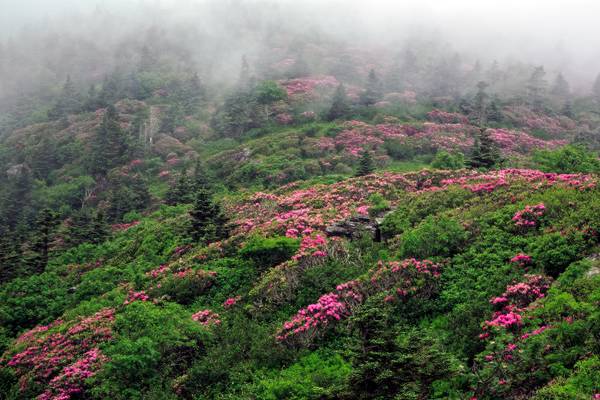
by Michael Kight
As I stated in the previous image, the Blue Ridge is covered in rhododendron… I wasn’t kidding! These are the showy magenta/pink Catawba that bloom from late May to early June, depending on the altitude of where they are located. Here along Grassy Ridge, they’re at nearly 6,000 feet (1,828.8 meters). That’s not fog up the ridge but rather clouds skirting the heights. It adds a sense of mystery to me, even though I'm very familiar with this place. The trail to this point leads through tunnels of interwoven branches of rhododendron, and it’s tight in a few places, especially if you’re carrying gear. The early colonial pioneers who first navigated these mountains referred to such thickets as “rhododendron hells” as it was easy to get lost among them. I wouldn’t suggest such a hike… but it’s amazing to see from above. Between the rhododendron are fir, mountain ash, and wild hydrangea for the most part. A note here to my UK-Irish friends... mountain ash here are what you refer to as Rowan trees. I've seen them growing at sea-level as I drove through Northern Ireland. Most of North Carolina's climate is of the humid subtropical variety, with the high Appalachians being the exception. We can use mountain ash as an altimeter here, as they're only found in elevations above 5,000 feet. The highest mountain east of the Mississippi River is Mount Mitchell at 6,680 feet here in North Carolina... which means the mountain ash will only be found on the highest ridges here, such as the one in this image.

by Michael Kight
Having fought in every major naval offensive in the Pacific Theater during World War II, the battleship USS North Carolina was decommissioned from service in 1947. It is now moored on the Cape Fear River in Wilmington, North Carolina. It serves as both a floating museum and a memorial to the veterans of World War II and to the some 10,000 North Carolinians who gave all in that conflict.
The rain departed in favor of the apt Carolina blue skies for this shot. As it turns out, I shot this particular image from a "restricted" area... for a shot like this it may be better to ask forgiveness than for permission. I'm standing in what little solid ground there is next to a marsh, surrounded by reeds and unseen things making noise around me. My "spider-senses" were tingling as it were and for good reason, as you can see below.
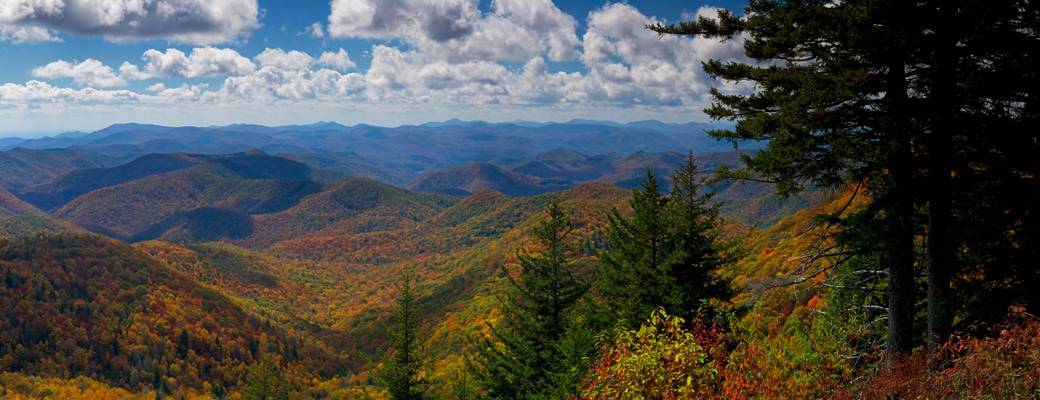
by Michael Kight
Here’s the scene you’re greeted with at the Wolf Mountain Overlook at mile marker 424.8 on the Blue Ridge Parkway. While there are quite a few wide-open spaces along the Blue Ridge Parkway, this one is among my favorites. I had my camera set up on the tripod and waited out the light as an overcast and rainy sky broke up into this low scud. This overlook is covered somewhat by the balsam firs you see on the right, and a stone wall on the left (that first step is a doozy without it). Many people merely drive by without knowing what lies beyond that wall… get out and look people! I’ve found that the tripod often becomes a magnet, as people want to see what interests the photographer. Back when I shot film from my Mamiya RZ 67 “Professional S” camera, I had a busload of people surround me at Clingman’s Dome, when some woman from within the crowd said, “Stand back everyone! He’s a professional… he knows what he’s doing.” I nearly died laughing. While I do what I can to approach photography in a professional way, she was reading the camera, not me.
At this scene, an older couple did stop and walked up to see what I was seeing. This woman made a more sensible comment, “It looks just like a patchwork quilt!” She was right.
Wolf Mountain is actually in the distance near that bit of water seen near the middle of the image… that’s Wolf Lake. The area was so named because it was once the last stronghold for wolves in the Carolinas. This area was home to buffalo and elk, too, until they were totally hunted out around 1850. That left hogs and sheep to replace them on the wolf menu, prompting farmers to exterminate the wolves too.
In recent years, both wolf and elk have been reintroduced to these mountains. I’ve seen wolves early, early (0’ dark-thirty) in the morning crossing the road at a farm near Julian Price Park… I had to stop as they ran by in the headlights. The elk still eludes me.
This is a true panoramic of seven vertical images stitched together in Photoshop. The original file is 72"x27". Best viewed large, against black, with salsa and chips... hey, that's just how I roll.
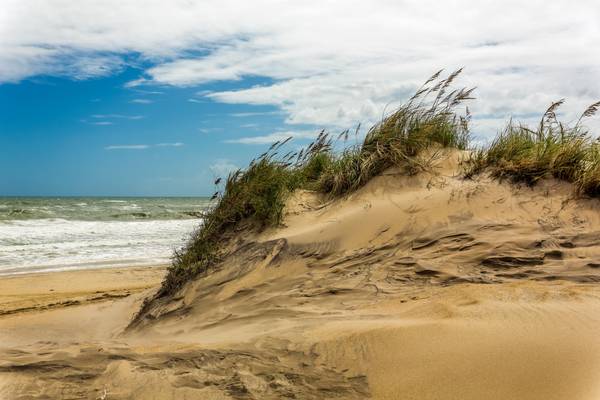
by Michael Kight
The wind at North Carolina's Outer Banks is relentless, as you can see on this dune. The area where I'm standing is a breach. High surf, likely from a nor'easter or hurricane, broke through the dune, leaving it exposed to the wind. On this day, sand was lifted along at high speed... it felt as though I was standing in a sand blaster well above head height... stand here long enough and it will exfoliate down to the bone. As you can see, there's nobody on the beach... well, except for some dummy with a camera.
As I explained in the previous posts of Bodie Island Lighthouse, these islands were a danger to ships at sea. This was taken just across from the Pea Island Preserve. In this place, just left of this picture is where the federal steamer Oriental sank in 1862... the ship's boiler can be seen at low tide.
Our barrier islands have a history of shifting with the wind and tide, but in this modern age, we prefer they stay where they are because there are roads on them now. That's one reason why the dunes are protected. The sea oats along the dune were planted there to prevent just what you're seeing here, as some of the drifting sand is visible. It's a tentative ecology at best, though it does help. Also take note here of the flat sandy beach that's indicative of every beach in the state. I much prefer this to rocky beaches, as it makes for better traction to run out of that surf when things are trying to eat you. Just saying...

by Michael Kight
For those of you unfamiliar with Biltmore Estate, I thought you might like to see from where I got the last two images. The low sun of early evening accentuates the brilliance of the tulips in just a portion of the main section of the Walled Garden. Biltmore's website boasts of over 72,000 tulips here... I only counted 71,999. I should feel shortchanged... what do you think?

by Michael Kight
High Shoals Falls is the jewel of South Mountains State Park here in North Carolina… like many beauties in this life, seeing it comes at a price, in this case, a bit of a climb that many cannot do or are afraid to do. This beauty isn’t one you want to stand close to. It drops 80 feet to this level, roars down to a jumble of huge rocks, then comes together to a quiet creek way down below… hard to believe how something so ferocious can become so tame with a little resistance along its journey.
There are other beauties in life, however, who are on a journey no one would envy… Flickr friend Evelyn McCullough from Northern Ireland is one such beauty who shines by making most of the life she has with terminal cancer. Obviously, cancer is not something anyone would choose… with that in mind, how many of you have heard stated “brave cancer patient”? Yet, I’ve been witness to jerks with cancer… what makes a difference is the character through which people choose to live life, even in the face of imminent death. Evelyn is definitely the epitome of the brave cancer patient, as she endeavors to make this world a better place while she can. That is true inspiration to me, even as I try to define the beauty of this world while peering through a lens.
For those of you who understand the power of prayer, please remember her. www.flickr.com/photos/herringpond/

by Michael Kight
A windy and pastel morning belies a turbulent history here on the Outer Banks. Though the rising sun was somewhat occluded behind me as I shot this, it offered a beautiful contrastive sky against this iconic structure.
Though built on a land that shifts with the wind and tide, Bodie Island Lighthouse has withstood hurricanes, nor’easters, floods, lightning, heat, and humidity, but 148 years of such conditions had taken its toll. After much determination, restoration of the lighthouse began in 2010. The last of the project was the installation of the refurbished Fresnel lens early last year... after a re-lighting ceremony, the lighthouse was returned to service April 18, 2013. Seen here in morning light after 152 years, Bodie Island Lighthouse is every bit the historical standout in its new-paint splendor.
I've been going through some older images and this one struck me as quite nice. I need to get back here sometime this spring... if any of you would like to get together for a shoot, let me know.

by Michael Kight
- Dangerously close to the Diamond Shoals off North Carolina’s Outer Banks, the sloop Thunderbolt, battered by a fierce storm and rough sea, catches fire from an overturned cook stove. All aboard scramble to put out the flames while trying to keep from being tossed overboard. The shoals, sand dunes just below the water’s surface, reach out some 18 miles past Hatteras Point. Hundreds of ships have run aground here, miles from shore, to be pulverized by the relentless waves... and often, all aboard drown.
On this day, a terrified 17-year old orphaned boy from St. Croix, on his way to an American education, is among those fighting to save the ship... he is Alexander Hamilton, who would get that education and become the first U. S. Secretary of the Treasury under President George Washington. Resting against the rails of the saved ship, he watches as the shoals recede away... and vows to one day do something so that others would not know such fear.
There was a reason ships were drawn near the shoals... wind-driven ships also relied on ocean current, which at times can move better than 40 mph. The Labrador Current sweeps down from the north and hugs this coast to about two miles off the beach. Beyond that is the Gulf Stream that moves up from the south toward the upper tier states. Often, it was faster for ships coming to Boston or New York from Europe to actually work their way south to catch the Gulf Stream than it was to come straight across the Atlantic. Even back in the day, folks in the shipping business knew that time is money. The confluence of the cold Labrador Current and the warm Gulf Stream also set up perfect conditions for violent storms and ocean swells. Add to that the shoals, which extended beyond sight of land in the midst of that confluence, and many an unwary ship’s captain left “money” to shift among the sands of these underwater dunes. Only jetsam and flotsam found on the beaches along the Outer Banks gave evidence of the fate of the ship.
As Secretary of the Treasury, Hamilton finally has the power to make good on his vows, and the U. S. Lighthouse Service, and eventually the U. S. Coast Guard fall under the auspices of the Treasury Department. The first lighthouses along the east coast were functional, if just barely, and were not constructed to the exacting standards you see here... there’s something to be said of building your house on shifting sand, as many of the early lighthouses here in North Carolina actually toppled shortly after construction. Under the supervision of Dexter Stetson, Hatteras Lighthouse rose up 210 feet from a foundation of granite, rubble, and entire lengths of pine pushed to the bedrock... and stayed up, as it has since 1870. With a focal plane at 187 feet, its light could be seen for 28 miles, well before a ship reached the shoals at night. Its conical tower with black and white spiral bands is visible by day on the horizon.
After his success at Hatteras, Stetson turned his attention here at Bodie Island. The name of the island is at contention, largely due to revisionist historians... the name is pronounced “body”, and is an archaic form of that word. Legend has it the name comes as a result of bodies washing ashore after some ship found its resting place in the of the Graveyard of the Atlantic. According to some historians, however, the name comes from a family that once lived here, though that has never been proven... the legend may not be so legendary, as such things did happen. A lighthouse would save lives here too.
There were two lighthouses located here previous to the one you see here. The first one leaned toward the sea shortly after it was built. That was in the day before electrical power, so the lighthouse had to be tended to every day... could you imagine having to climb up a structure so unstable that it might topple any second, at least twice a day? Me neither. It failed and was replaced, but Confederate troops blew the second one up in 1861 during a series of skirmishes as Yankee troops descended on Fort Fisher. The third installment of Bodie Island Lighthouse projected light from its first order Fresnel lens for the first time in 1872. At a height of 165 feet, its beam can still be seen 21 miles out to sea.
Though built on a land that shifts with the wind and tide, Bodie Island Lighthouse has withstood hurricanes, nor’easters, floods, lightning, heat, and humidity, but 148 years of such conditions had taken its toll. After much determination, restoration of the lighthouse began in 2010. The last of the project was the installation of the refurbished Fresnel lens early last year... after a re-lighting ceremony, the lighthouse was returned to service April 18, 2013. Seen here in morning light after 152 years, Bodie Island Lighthouse is every bit the historical standout in its new-paint splendor.

by Michael Kight
A few posts back shows this same location, though shot into the brilliant light of the rising Sun. This is looking the other direction just before the Sun popped up on the horizon at my back. This is more of a 23rd Psalm image than those brilliant shots, pastoral and peaceful. The hike down from here at Hawksbill Mountain is always one of contemplation of the beauty of God’s creation… always worth the hike up!

by Michael Kight
A thunderstorm over Price Lake with some autumn color was hard to pass up. When I got there, however, the setting Sun seemed to have taken the energy out of the storm. It began to shred apart above this high mountain lake (3,500 feet). Sunlight seemed to poke holes in the cloud, adding a sense of drama to the sky. As I’ve said in a previous post, I don’t as a rule shoot straight into a bright Sun, but this was hard to pass up. The storm receded enough to uncover the Sun, exposing the brilliance of the colorful fall foliage… the lens flare saturates it even more.
This was taken during sequestration by President Obama concerning a budget battle with the legislative branch of government. He had shut down the national parks as a result… you could still get to the Blue Ridge Parkway, but no services or campgrounds were available. I had the tripod set on likely the best vantage facing west. Before long, another photographer came to check it out. Though he spoke English well enough, it was tinged with a Russian accent. The sequester had occurred the previous day… he had been camping in his van and had planned to spend his evening here at the nearby campground, only to find it gated. Joyce and I had rented a cabin with a lot of room, so we invited him to spend the night… he was a bit reluctant at first, though he gave in.
His wife was a tenured professor at the University of West Virginia. When their schedules didn’t quite jive, he would take a driving sabbatical with just he and his camera. He knew some about the parkway, though little about its periphery. I was delighted to have him tag along to some highlights of the Blue Ridge in this area for the next few days. We made fast friends at the cabin’s table at breakfast and dinner… we were the same age… and we had once been determined enemies of the Cold War, he in the Russian Army, me in the U. S. Air Force. We traded many stories, some of his of which I had known the conclusions. While the meaning of Pravda was "truth", it defied the very definition of truth, and there was very little of truth in it as journalism to the people of Russia. Perhaps that's what our media has become, overall. Despite problems in this nation, one of the things that had stood out to him in his time in this country was the graciousness of the American people as a whole. He expressed that to me as he left to continue his excursion of the parkway… I asked him to just pass it along.
I’ve stood in this very spot to shoot stars on the darkest nights… bright images like this make me realize that the reason for light is to expose what lays in the darkness. My once upon a time “enemy” Russian friend reminds me of that. There's a lesson in there somewhere... figure it out.

by Michael Kight
I’m getting prepared to get out to the mountains soon for some winter photography… some in my circle here in Durham don’t much understand that. This image is from the fall of 2015 at Boone Fork Creek. I was pretty upbeat this day, though there were some who questioned my sanity on getting out to photograph in the clouds that had dropped over the highlands. As you can see, it was a perfect day to translate nature’s beauty through photography. No, it’s not the sunshiny day many would go for… but they’re missing out. My photographer buddies in the mountains know better and can find beauty where you least expect it.
That same understanding comes to the forefront this time of year, though with regard to everything in our lives, not just photography. It seems many choose not to look for beauty in this world for one reason or another, especially with concern to a post-Christian culture. Ecclesiastes 3:11 points out something pretty extraordinary, however, with that as a concern: "He has made everything beautiful in its time. He has also set eternity in the human heart; yet no one can fathom what God has done from beginning to end." Perhaps it's time to tap into that "eternity" to see this world the way God does... chances are you will find beauty where you least expect it. Go be beautiful!
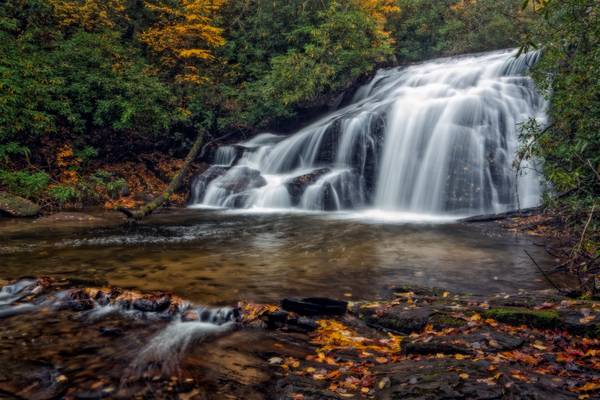
by Michael Kight
I hadn't been to White Owl Falls for many years before this autumn. That tree trunk left of the falls is the reason why. Fallen from a storm years ago, I found my way down here shortly afterward to find that intact tree occluding the face of the falls, hiding its beauty... but that's not what makes it hidden.
Heading south on North Carolina Highway 281 (Whitewater Road) toward South Carolina, there’s a pulloff on the right that fits perhaps a few cars just past Brewer Road. It’s a short hike from there though not exactly an easy one. The hike gets interesting just beyond the beginning of the guardrail across from the pulloff… there’s no definitive trail from that point. There is a concrete chute, however, that indicates you’re in the right place. Follow that chute down from the road, and be careful, as it can be slippery, and you don’t want to shoot out of the chute! Continue in the same direction paralleling the road, not further down. This seems to confuse a lot of folks, yet the faint trail becomes more evident as you move along it, as does the roar of the falls.
I wore my high Bogs boots on this hike, as I planned to work out every composition I could eke out of White Owl. Fortunately, Thompson River here isn’t quite like the Hudson River, other than the fact it’s wet and it’s a river… I can traipse around the falls in my Bogs without getting my feet wet. It was fascinating to me to be standing amid such beauty while hearing cars whizzing by overhead, with drivers and passengers oblivious to this scene.
The camera got a good workout there and I had other waterfalls to get to in my limited time there in the Blue Ridge. Yet, having packed the camera for the hike out, I just had to sit there and enjoy the reverie of this hidden beauty.
The State Funeral of President George H. W. Bush (41) just ended and the theme of “hidden beauty” throughout it struck me. There are problems here in America, but at times like this, it's evident decency is still the core value of Americans. I teared up along with President George W. Bush (43) as he eulogized his dad… the things he related to his dad spoke volumes about my dad as well, whose funeral I had eulogized a year and a half ago. That was one of the hardest things I have ever done, and I broke down as well… my heart went out immediately to 43 when he choked up, as that’s not weakness... it’s humanity at its best. The issues he stated of note: “He looked for the goodness in others, and he usually found it.” “He put character before pedigree." And, “Hatred corrodes the container it’s carried in.” Would it be too much to ask for Christmas that we all embody these things?

by Michael Kight
I’ve had some trouble with my eyes over the last month with a condition known as Posterior Vitreous Detachment (PVD). It happened with my right eye when I was washing my eyes out while taking a shower. There was an explosion of sudden sharp floaters and flashes of light, and it was evident my sight in that eye immediately degraded… I liken it to peering through dirty glasses with a bit of glare to boot. I made an appointment with my optometrist two days later. I was relieved to find out that this is something that happens to folks as they age, usually ranging from ages 50-80… after age 80, it’s pretty much expected. A week later, I was reading an article about PVD that stated if it occurs in one eye, you can expect it in the other eye within a year. I told myself, “Alright! More good news. Bring it on!” And 3-hours later, it did.
While relieved that I wasn’t going blind, I was resigned to the fact that I am at that stage in life… I’ll be 64 at the end of December. That said, I didn’t let it keep me down long… my personality is more Tigger than Eeyore, so I continue bouncing toward what makes me better function as the person I am as opposed to dwelling on things I can’t change.
One of the things I look forward to is putting my camera in front of interesting places. While color in the mountains didn’t work out too well for the upper elevations, the lower elevations worked out well with autumn showing itself well beyond what it normally does. I took advantage of that this past Sunday and Monday on a waterfall excursion around the western end of North Carolina Highway 64… I walked off with some images I’m happy with that I’m still sorting through. This one of Crabtree Falls, however, is from 2015… and there’s a reason I’m posting it first.
I had to go back for a visit yesterday for my one-month check since the diagnosis with my eyes to make certain there were no further problems, such as tears in the iris or back at the optic nerve. All is good with that. While I was there, the assistant prepping me for the optometrist had mentioned that she, too, had just come back from the mountains and had hiked a waterfall near Ashville that was quite strenuous for her. I asked what waterfall… it was Crabtree Falls off the Blue Ridge Parkway near to Burnsville. It’s not a long hike, about a mile down, but “down” is the key word there… it’s steep, though so worth the effort if you find conditions like this.
Waterfalls can be described as anything from cascades to plunge falls… this one finds itself in a different category, as Crabtree Creek winds itself down to the chute above the falls, then spreads across the 70+ foot near vertical rock face into what appears as a delicate lace veil.
My vision has improved over the last month. One particularly well-defined “floater” is known as Weise’s Ring, material left over as the vitreous loosens from around the optic nerve… it was so well-defined that for the first few days, it made me think that something was flying around me that warranted swatting! There are also clouds of other material that appear as swarms of tiny zeros with a dot in the middle of them… go figure! This material is likely causing the glare I see. Things are settling down now. The brain actually cancels out the sharpness of the floaters to the point they are quite a lot less noticeable. The optometrist informs me the “zeroes” will likely go back to solution within the eyes in the coming year. The ebullient Tigger in me is confident that my sharp vision will return, assuming I make it through the year… even Tigger needs to see well enough not to bounce into the oncoming bus!
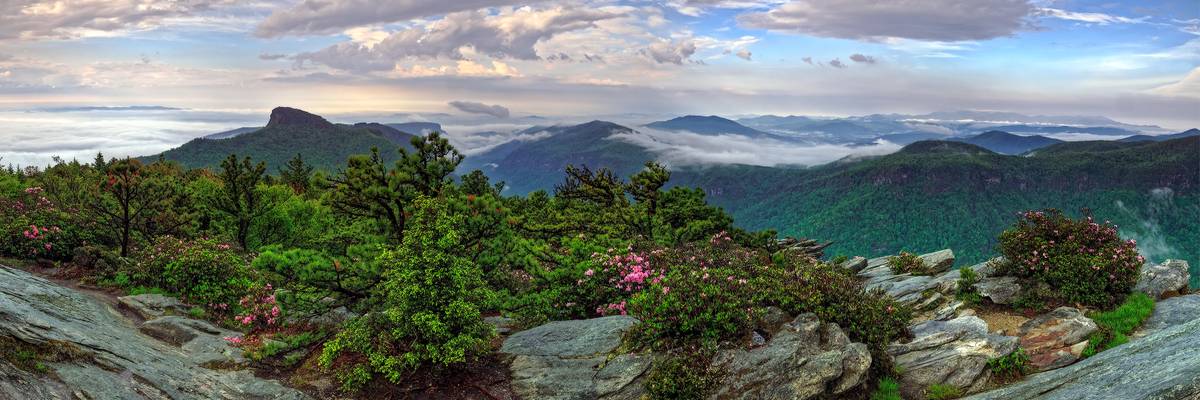
by Michael Kight
The destination this weekend was to the crest of Hawksbill Mountain and the ephemerally beautiful Carolina rhododendron that adorns it. I started the trail up to the top around 4 AM and it was evident with my flashlight shining back at me that the mountain was wrapped in fog, or rather cloud, at this altitude. My thoughts were that I might get above it at the top, but no such luck. Energy from the rising sun burned it away, however, leaving fog in the low valleys and a dramatic sky overhead.
That morning progressed from gloom to what led to this image... a good impression of what rises above Linville Gorge, from Wiseman's View across the gorge on the right to Table Rock on the left. You can also see the Black Mountain Range obscured by cloud in the distance on the right, where Mount Mitchell, the highest mountain east of the Mississippi, lays along its spine.
This panorama consists of 6 vertical images stitched in CSS Photoshop Adobe Camera RAW, with a final output of 72"x24".
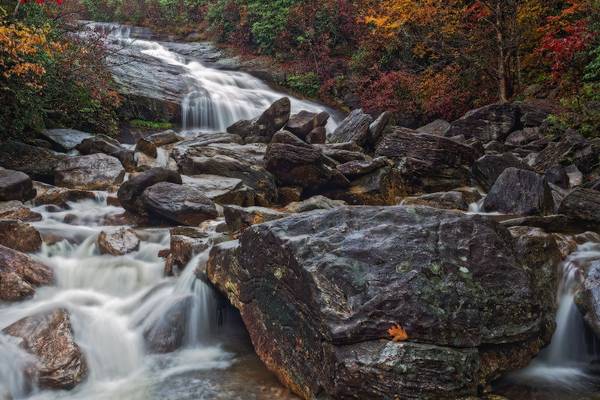
by Michael Kight
This was taken the day of my encounter with the camera club… that’s explained in detail on my image “Sunrise Over Courthouse Valley” several posts back. The gist of it is that they were in deep discussion as to their course of action because it was overcast, ruining their chances of a decent sunrise. My frame of mind is lemons to lemonade. I, too, headed for the high regions of the Blue Ridge Parkway with the realization it might not work for sunrise… nearby Second Falls worked out perfectly, however.
Here, the autumn foliage around the falls is as brilliant as it can be… who needs a sunrise? I shot this a short distance downstream from the falls where the jumble of boulders dominate the bottom of the image. As does electrical current, water current follows the path of the least resistance. There is no placid pool here… rather, the resistance these rocks offer sets up a myriad of smaller waterfalls along this drop.
One thing that stands out to me in this is the large boulder in the foreground. The full print size for this image is 24”x36” at 300 DPI… you can see incredible detail in that rock of not just the variation in color, but also of the moss and lichen evident on it. That rock is in a constantly wet environment, so there’s a lot living on it. The single red oak leaf (no, I didn’t put it there!) is also quite detailed and adds a sense of scale. It’s nice to go out with a thing in mind for the camera, and nature just works for you… I hope the “camera club” fared as well.
For those who do not know, Second Falls can be seen from the parkway at Milepost 418.5. Just south of there is the Graveyard Fields Overlook... you can hike down to the falls from there.
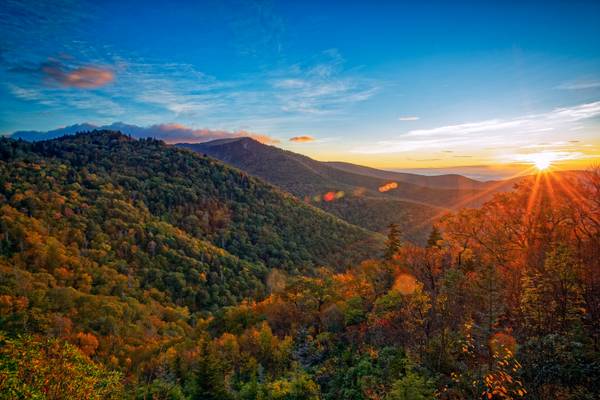
by Michael Kight
I once had a discussion with a fellow photographer who claimed be a “purist” in his craft as “Ansel Adams was a purist.” This guy didn’t have a whole lot going on defining his approach to photography, as Ansel Adams was anything but a purist. He was an artist who burned and dodged like a madman in the darkroom to get the outcome he envisioned.
While it’s good to have “vision”, the landscape photographer often needs to dig down deeper for just a little more. In my few days in the Pisgah region of the Blue Ridge last week, I discovered that members of a camera club were staying at the same hotel I was. On a particularly cloudy morning (which translates to fog as these mountains are high enough to reach into clouds), they stood in the parking lot in debate as to what they should do. That’s one reason I don’t do “camera clubs”… too many opinions will no doubt skew outcomes. I would say that not every such “outcome” is likely bad, but these folks should have been better prepared regardless of the conditions. I knew the weather conditions days in advance. I also knew that conditions in these mountains can be iffy. Overcast days are not what one hopes for if they’re vision is for the perfect mountain sunrise, yet they are just right for waterfalls… and fog can be a bonus in that effort! That’s what’s great about the Pisgah region… it has high ridges and waterfalls within short drives of each other. When one situation doesn’t work out, you can switch it up quickly if you know the area.
Their group was gathered outside the main entrance underneath the awning, so they couldn’t help but notice me walking through with my camera gear over my shoulder. “Where are you going”, one of them asked me. I told them somewhere within 10 miles south on the parkway from 276. “What are you after”, someone else asked. I told them, “The same thing you’re after… all the shots. But if you don’t leave soon after me, I’m going to get all your shots, too!”
I appreciate Ansel Adams, especially of how he elevated photography as art. That’s what I’m attempting to do, too. I have incorporated his maxim for photography into my own approach, “f/8 and being there.” For those who do not understand, “f/8” is a sharp focal stop on large format camera lenses… that means that you need to understand your equipment to compose a meaningful image. The other half of that maxim, “being there”, is self-evident. The camera is a great motivator for “being there”… but plan ahead!
By the way, open blue skies make for blah sunrises, too… but there are workarounds. This was taken the following day a few miles further down the Blue Ridge Parkway than the previous day and a little ways down Highway 215 toward Rosman to where Courthouse Valley opens up… the far high peak is the Devil’s Courthouse. That "Devil" was the slant-eyed giant Judaculla of Cherokee lore, who "holds court" on hapless souls up there. I've hiked up there dozens of times, yet I have never run across him... must have been his day off each time. The likely reason I've never run into him is this very image which proves I'm anything but "hapless".
The Blue Ridge Parkway is on the far side of that ridge. While many were on the parkway that morning with cameras pointing into the rising sun with no clouds to reflect color, I chose this location to let the sun backlight the ridges, the near one giving me the color that the sky lacked. As I’m standing on the edge of a steep rocky cliff here, I got my shots and pushed on to Courthouse Falls. That waterfall isn’t affected by direct sunlight until midmorning, so I got a twofer that day. “Being there” can be tough sometimes, but oh what a blessing it can be!
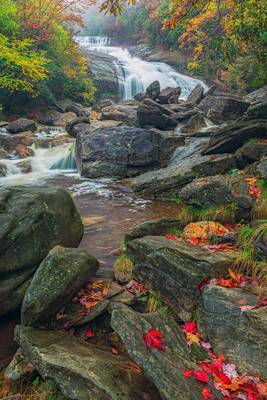
by Michael Kight
Hit the "L" key to see this better. It was the last day for me in the Pisgah region of the mountains of North Carolina. I had been by myself this week, but I was to meet Joyce and others for the coming week 100 miles away in Newland, between Linville Gorge, Grandfather Mountain, and the Roan Highlands.
As I checked out of the Pisgah Inn, the staff apologized to me as to the "sorry condition of the weather"... the area was socked in with fog (clouds, actually, at this elevation) and rain. I thanked them and let them know that the conditions on the Blue Ridge Parkway were just right for me.
Not long afterward, I found myself to be the only one at Graveyard Fields... rain had kept others at bay. After a short descent, I found this intimate perch underneath a maple tree at Second Falls... conditions lit up the autumn color in a grand way, and I didn’t have to fight anyone for it or jockey for position. I just had to relax and take it in.
My life has been somewhat of a whirlwind over the last year. There had been much to plan for and much more to do. There have been times when I felt like I was in way too deep... like a drowning man, I just needed some air. There’s still much to do, yet there are those things that keep me grounded... and encouraged to go forward.
The familiarity and beauty of these mountains refreshes me as though I’m coming up to breathe after so long... it slows me down so I can hear God speak of the blessings and mercies He’s freely given me... including the blessing to just be here. I pray those blessings for you, too. You'll have to get your own mercies, though... just kidding! It's a package deal that comes wrapped up in joy... go for it!
I’m up early in the morning, and ascending the trail to Rough Ridge, long before sunrise... come up with me!
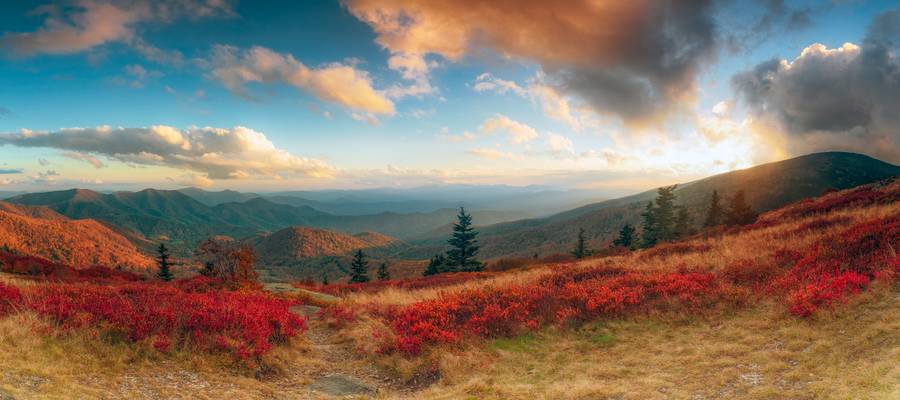
by Michael Kight
This is a repost. Likely thanks to the Flickr app's not-so-well placed delete button, it was apparently "butt-dialed" out of existence... I need to speak to the powers that be about that.
This is Round Bald, of the Roan Highlands, from a couple of years back. This is always a favorite destination in spring with Gray's lily, Catawba rhododendron, and flame azalea lighting up the bald, but what does autumn offer? I've had other photographers to tell me "Not much." Apparently, blueberries on fire framing the surrounding mountains dressed in autumn's finest isn't worth their effort. I beg to differ, but you be the judge.
I generally spend a week in the Grandfather Mountain region in the fall. That gives access to many places that shine in that season, like Rough Ridge, Linville Gorge, and Boone Fork, of which most favor morning light. Round Bald, especially with consideration of the mountain layers beyond it, favors evening light, so it's always a part of my photography agenda.
I approach photography with a sense of wonder. Even familiar subjects like Round Bald are always fascinating with the changing seasons and light. For all that, I still have room to learn. My wife and I work closely with many foreign students at Duke University through International Students, Inc. On a recent trip to the bald, married friends from China made observations that were not lost on me.
Both Jesse and Sophia (their Anglicized names) were transfixed with the clouds rolling across the bald. Jesse made two observations, the first being that it reminded him of Chinese mythology of immortals breathing mist. Mythology stemmed from people trying to make sense of their surroundings in a time before science. Both of my friends are Christians and well-versed in science, but for them, the highlands were otherworldly... even in my familiarity with the place, I could well understand their fascination.
While shooting his own photos of the mountains disappearing into the mist, Jesse just lowered the camera and looked around as he stated that he had "never heard such quiet." Earlier in the day at a mountain stream, Sophia noted that she felt as though her nose had just taken a shower. I love that description! The conditions of Beijing made our mountains stand out to these sweet visitors, and though I've not (yet) been to Beijing, they made them stand out to me, too.
We have friends coming from England in September. I drove 700 miles through England last year during a bank holiday. That made me realize something: England comprises roughly 4/5s of the total area of North Carolina, yet with a population of 50+ million people, England has 10-times the population of North Carolina... and I believe they were all on the road while I was there last year. We're picking our friends up in Charlotte and staying together in a wonderful cabin near Newland. I can't wait for their impressions up here at Roan Highlands... the blueberries should just be turning.
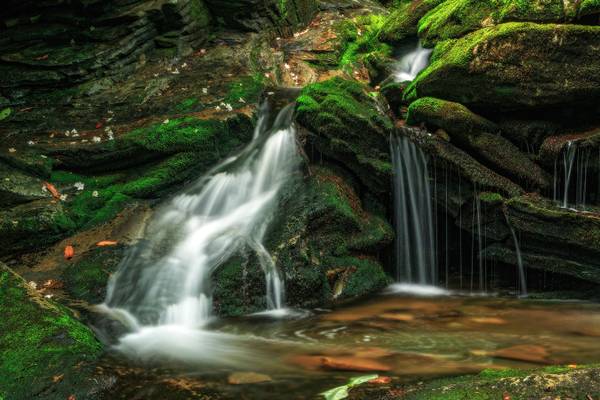
by Michael Kight
More from last week’s foray to the Blue Ridge… part of an unnamed cataract along Dugger’s Creek near Linville Falls. This is a landscape of minimal proportions, highlighting the moss-covered rock layers as much as the cascade. The fallen rosebay rhododendron petals along the rocks add a sense of scale. Again, it was mostly an open blue-sky day… I was here, standing in the creek for over an hour to get this shot before a cloud finally covered the sun long enough to get it. So often in these situations, the photographer’s greatest nemesis isn’t the elements or the technical aspects of the camera, but rather patience. I hope that shows here.
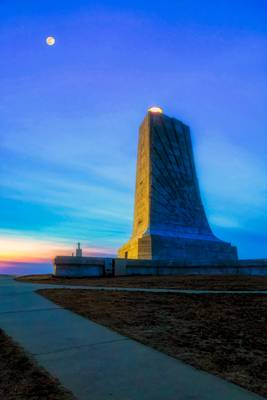
by Michael Kight
Wright Brothers National Memorial, located in Kill Devil Hills in North Carolina, commemorates the first successful, sustained, powered flights in a heavier-than-air machine by the Wright Brothers on December 17, 1903. It was dedicated November 14, 1932, on a day not much unlike the conditions during their famous flight tests here... stormy and windy. Orville Wright was the main guest of honor at the ceremony (Wilbur died 20 years earlier from typhoid fever).
On July 20, 1969, a scant 65 years after that first flight, mankind first stepped on that moon up there. While that was achieved with rockets, it could not have been done without a thorough knowledge of controlled flight... I wonder what Orville and Wilbur would have thought of that?
My mom's dad and my dad both worked for NASA. Dad repaired computers at NASA's Langley Research Center in Hampton, Virginia, back in that day. Before Neil Armstrong took that "one small step" on the moon, he was walking around that facility suspended on a system of slings and cables to experience how the Moon's gravity might affect him. The Apollo astronauts also practiced what it might be like to land on the Moon there using the 240 foot-tall Lunar Lander Research Facility... a lunar lander simulator. Of course, actually landing on the Moon presented problems that engineers never dreamed of for the simulator... Apollo 11's landing of the Eagle nearly wasn't. A switch that had a piece of tin/lead solder floating around within it in zero gravity kept shorting contacts that lit an indicator to abort the landing... after a terse discussion with Mission Control concerning Eagle's flightworthiness, Buzz Aldrin continued descent, and manned flight history was made yet again. Aboard the Eagle that day, along with the astronauts, was a piece of wood and some fabric from the original Wright Flyer... from Kittyhawk to Tranquility Base and back again, and you can see it here at the Visitor's Center.
On the 21st of this month, I'll enjoy what the Wright's creativity brought to this world on a flight aboard a restored vintage World War II B-25 Mitchell bomber at the Winston-Salem Air Show... I might even get a picture or two! Hope to see you there.
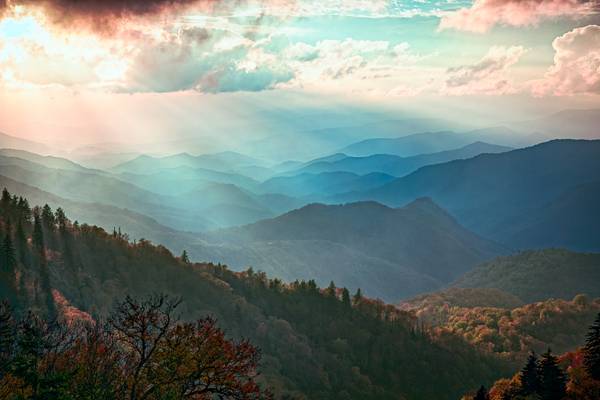
by Michael Kight
Within this region of the Blue Ridge, my place of choice for a sunset is the Cowee (pronounced co-wee, Cherokee for “place of the Deer Clan) Mountains Overlook at Milepost 430.7 on the Blue Ridge Parkway. It’s a high place looking down on a cascading mountain range. I often shoot it as a panorama. I decided to change things up this year by taking a chance further south at the Woolyback Mountain Overlook at Milepost 452.3. While cloud coverage occluded a colorful sunset, I’m quite pleased with what happened here as the low sun punches through holes in the clouds. As it does, it gives a hint of the autumn forest, layers of mountain ranges, and light streaming through the mist among the trees left of the near ridge which adds to the dimensionality of the image. You can also see some diffraction going on in the clouds. It’s deeply fascinating to me to see the atmosphere become quite tangible, as though you can reach out and touch it… I’m not certain that a colorful sunset would have been as satisfying as this heavenly view.

by Michael Kight
According to AccuWeather and two others prognosticators, this is apparently what 80% humidity and heavy overcast tending toward showers looks like. That's what was predicted for the entire area every hour, on the hour, while I was at the Outer Banks a couple of weekends ago. Being a "lemons to lemonade" kind of guy, I decided to go for it anyway... glad I did. Likely, the folks under those distant cumulus clouds can't make that statement. Anywho, this all makes me wonder what a good day looks like here.
I rarely go to the beach in the summer... it's just way too crowded. I had a reason to visit, though... I'm searching out some iconic North Carolina dark sky places to shoot comet ISON later this year. It won't work here with the Cape Hatteras Lighthouse, as its light, which swings into view every 7.5 seconds, will be blown out in a 22 second exposure. Of course, you can block the lens for all but one blink, but you'd have to add that time back into the exposure and the stars would become dots and dashes... not good. For now, however, it makes for a nice contrastive daylight image of one of this state's true icons. Folks were touring the lighthouse... you can see them on the balcony around the light.
What you see growing here, for the most part, are sea oats... it's what they make Cap'n Crunch kid's cereal from (who am I kidding... I haven't had it in years, but I like it too! What's not to like? It's mostly sugar... and sea oats, of course). Actually, it's against the law to mess with them... they help to keep the dunes intact during windy conditions, which is to say they keep the island intact. The Atlantic Ocean is about 100-feet behind me here... the sun was reflecting off both that and this brilliant sand, which seemingly focused directly on me the whole time I was out there... even with sunblock, I had a little trouble sleeping that night, not so much because I was burned, but because I glowed in the dark. Things are back to a less radioactive condition now.

by Michael Kight
In 1540, Spanish Conquistador Hernando de Soto and his men explored Cullasaja Gorge in their quest for gold. The cascades here stretch for about a fifth of a mile across densely forested rugged terrain before making a final drop into the gorge from Cullasaja Falls. It makes you realize that had to have been a particularly mean hike for the conquistadors… they would have had a better time of it had they marched up here at highway NC64 where I shot this from.
There’s a short pulloff on NC64 between Highlands and Franklin, North Carolina, where you get the best view of Cullasaja Falls, which, to me, is the most impressive waterfalls in the state when the water flow is good. It was raining this day, with even a wisp of cloud evident in the image… and you couldn’t ask for better light to make the autumn colors pop. This “spot”, however, is at the apex of a blind curve and very close to the edge of the road… I've watched people stand in the road for “selfies” here, oblivious to how fast a vehicle will suddenly appear at either end of the curve. You need to use your noodle here or you’ll wind up as noodles on the pavement!
For as beautiful as it is, the face of the waterfall has become occluded over years by a scraggly rising foreground. I didn’t include it in this image for that reason. I do understand that it is the least of our problems in this world but being that it draws so many visitors to this neck o’ the woods, it would be great to see the view cleaned up… maybe we should start a petition. Who knows? It just might happen.
If you didn't know, Cullasaja is a Cherokee word meaning honey locust place. The honey locust is a tree. The name derives from the sweet taste of the legume pulp, which was used for food by Native American people. The long pods, which eventually dry and ripen to a leathery skin that sticks to the pulp within. The pulp, which is bright green in unripe pods, is strongly sweet, crisp and succulent in ripe pods. Dark brown tannin-rich beans are found in slots within the pulp. It can also be fermented to make alcoholic beverages… the Cherokee were obviously an advanced civilization!
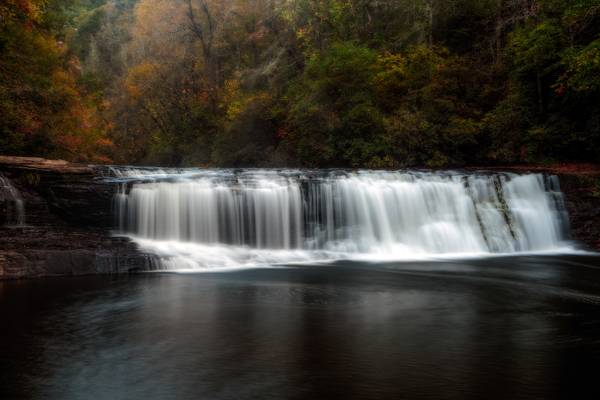
by Michael Kight
I’ve been quite busy with issues that keep me close to home of late. One of those things is the Alpha Marriage Course that my wife and I have helped produce at our church… we’re amid the fifth round of eight-weeks each that we do twice a year. The course is free to those who attend each Thursday. We provide great meals, child care, and a wonderful ambiance to go with the program… but that takes an incredible amount of teamwork and dedication to produce each week. I’ve determined to make it up to the mountains, however, to see them dressed in their October finest, so I’m working around that hectic schedule.
Thursdays during AMC find me on my feet most all day long until the last of cleanup around 9 o’clock later that evening… Friday’s are recovery days. I spent Friday making plans for a photography foray into the Blue Ridge Mountains of North Carolina… a problem beyond a commitment to the program occurred to make a mess of things this year: Hurricane Nate. Sunday and part of Monday were to be a washout in the mountains, so I decided to head to the high southerly portions of the Blue Ridge Parkway near Pisgah on Saturday for an eyes-on survey before committing to a couple of nights in the region. Nate, now downgraded to a tropical storm, had also degraded visibility there as the high mountains reached up into the outer bands… I did get a glimpse of color in some places, though the parkway was closed at Black Balsam Road in anticipation of high winds and rain creating havoc with rockslides and trees… better safe than sorry. Though it was approaching sunset, I worked my way down Highway 276 toward Pisgah Forrest and beyond to DuPont State Park for the possibility of a waterfall shot or two before returning home… I’m glad I did, as I walked off with something nice and I can concentrate on other places in the region this Monday evening through Wednesday. This was taken as it was darkening... but it was absolutely windless and the darkness allowed for a 20-second exposure, which flattened out the turbulent water for some great reflections.
Nate did do some damage in western North Carolina, with a confirmed tornado in Caldwell County. Tragically, a Morganton firefighter was killed instantly when he was struck by a car while clearing storm debris from Highway 70. Please remember his family in prayer. Apart from that, it appears the Blue Ridge Parkway has opened all but a few spots, mostly appearing to be a couple overlooks… I’ll know for sure later today.
Sunday was spent doing some prep work for Thursday’s meal… it’s baked ziti this week, with Caprese salad and tiramisu for dessert. It helps to get ahead of the game, although remnants of Nate should make for some great sky scenics along the high regions of the parkway and that calls to me. Thursday is slated to be a “bright and beautiful cloudless day”, which as you may know is anything but beautiful to the photographer, so I won’t be missing much on my return to duties in Durham.
I’m going to try for the Linville Gorge region next week… who’s going to be there?
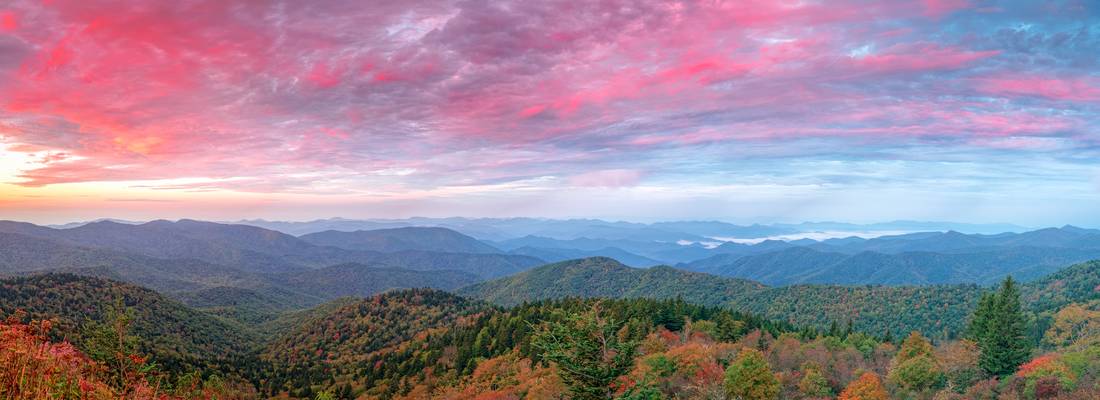
by Michael Kight
"The pursuit of truth and beauty is a sphere of activity in which we are permitted to remain children all our lives." Albert Einstein
I’m with Albert on this issue… have you ever truly watched young children at play? Theirs is a world of wonder, where they make up one adventure after another. Much to the dismay of many a parent, they must “grow up”, and often, a line is drawn between wonder and reality… and that’s a shame.
Are you familiar with the notion of NOMA? That’s an acronym for Non-Overlapping MAgisteria, a notion brought to us by well-meaning scientists who tend to be very narrow in their scope… in other words, God-less. In simplest terms, what it states is that in conditions where science and theology intersect, you must always side with science. Really? Who makes that decision? Empirical Science came about because of the Queen of the Sciences, Theology. The reason for science is to take us down a path toward truth, yet that’s the same reason for theology. It seems to me that at some point, science and theology won’t merely intersect, but merge.
I suspect that line between wonder and reality works much the same way, merging into a pursuit of beauty. Songwriters, novelists, and poets can be obsessive in their quest of just the right word. For painters, sculptors, and craftsmen, it’s the next notch or stroke that stands apart. For the photographer, it’s the understanding of lens and light, and being there, wherever “there” is… all in striving for a quality of perfection in the pursuit of beauty.
You notice this quality precisely because it is so rare. What generally brings a work of art alive is not its inevitability so much as the decisions that the artist made. We gasp not because the words, the impressions, or the brushstrokes are “right”, but because of what they reveal. They show us not a deterministic process but a sensitive mind making surprising and delightful choices. This is evident even in science, as pure mathematicians often say that it is precisely this quality that delights them in a great proof: not that it is correct but that it shows a personal, tangible human genius taking steps in a direction we’d never have guessed. That’s a direction showing that pursuit of beauty goes way beyond mere art.
Paul states in Philippians 4:8, “Finally, brothers and sisters, whatever is true, whatever is noble, whatever is right, whatever is pure, whatever is lovely, whatever is admirable—if anything is excellent or praiseworthy—think about such things.” This is one verse that is taken out of context more often than not. I doubt that it was intended as a set of lofty ideals to separate Christians from the secular. When you look at it in the reverse of separateness, could it be that it is a way for us to sanctify this culture through our faith? The secular culture of late seems bent on doing everything to put the “post” in the post-Christian Era… oh, there is the occasional intersect of the culture and Christian ethic, yet seldom without a true merge. An atheist humanist contact once sent me a video of an atheist humanist community out to prove that you don't have to be a Christian to do good. The spokesperson went on and on about that, but fizzled at the end when he tried to define 'good'... without a transcendent source to determine 'good', anyone can define it however they choose. Where culture and the Church diverge, it’s culture that must change, not the Church… but how is that done?
There is not one square inch of the entirety of creation about which Jesus Christ does not cry out, “This is mine! This belongs to me!” That quote is attributed to Abraham Kuyper, and he’s right because God owns it all, including the secular society whether they know it or not. That being the case, whatever is true, whatever is noble, whatever is right, whatever is pure, whatever is lovely, whatever is admirable can be found in the secular as well as the sacred. Can we find truth and beauty in people caring for each other in times of crisis? Do we see nobility in the sacrifice of a soldier, policeman, or fireman? Can it be right to enjoy a secular movie or song? Is it lovely to find a married couple that stays together when others are splitting up? Can we find something admirable about the sheer ability of an athlete? Could we not look for something praiseworthy in the ordinary talents and capabilities of everybody we meet? Do you think the secular world would see something excellent in us if we could point to what is excellent about it? Is there a possibility that the ugly ideas of this world would get pushed back into the shadows if we brought out the beauty of God’s truth in it? Is there anything of value in the secular world? The constant pursuit of beauty might reveal it… but grateful people who see the beauty in grace already know that.
The things that we find beautiful today we suspect would be beautiful for all eternity. This is where God’s Word breaks in: “The heavens declare the glory of God and the firmament shows His handiwork.” Psalm 19:1… even God, as an artist, is expectant of beauty.
This was taken from the Cowee Mountains overlook near milepost 430 along the Blue Ridge Parkway here in North Carolina. Cowee (pronounced Co-wee) is a derivative of a Cherokee word meaning 'place of the honey locust', a tree they used for food. It is by far the best place for sunset on the BRP, but as you can see, sunrise can be spectacular, too. After many mornings of standing here in the cold and darkness trying to ply my handiwork as a photographer at this spot, the long red wavelength of light found its way from across the horizon and saturated the low clouds to compete with autumn over the cascading mountains. I stitched 7 vertical images to catch that big sky, yielding an image 66”x24”. I understand the science behind this image, but to be honest, in the wonder of this morning, I knew God threw me a bone... much appreciated! “f/8 and being there.”
To Be Grateful
For life, for breath For daily strength and bread. O, let me not forget - to be grateful For moon and stars, When the road is dark, Lord, for your holy scars – to be grateful That you call me friend For the grace to stand And the mercy that I need By your sacrifice Jesus, I’m alive So what tribute can I bring Here is my heart offering – to be grateful, endlessly Here is my heart offering – to be grateful In highs and lows Whether joy comes or goes Lord, let it shape my soul – to be grateful For friends so rare, When it rains despair, And even near death to dare - to be grateful CHORUS For life, for breath For daily strength and bread. O, let me not forget - to be grateful
@ 2013 Skin Horse, Inc (ASCAP) by Billy Sprague
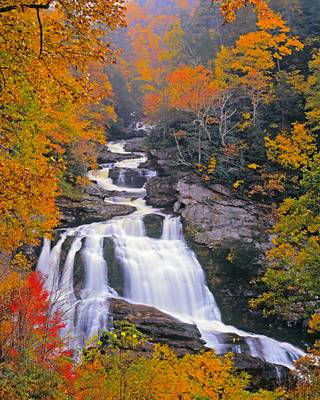
by Michael Kight
Seen roadside off NC64 between Highlands and Franklin, North Carolina, Cullasaja Falls is one of NCs most impressive waterfalls. It is the last major waterfall on the Cullasaja River as it drops into the rugged Cullasaja Gorge. In 1540, Spanish Conquistador Hernando de Soto and his men explored the gorge in their quest for gold. If you've ever seen this area, you'd realize that had to have been a particularly mean hike.

by Michael Kight
Cullasaja Falls is perhaps my favorite waterfall in North Carolina, and has been since my first encounter there many moons ago... but it's getting quite overgrown of late. I keep hoping the state realizes the economic impact of these highlands, and clears out the growth occluding the bottom tier of these falls, as it used to be.
The word Cullasaja is a phonetic derivative of a Cherokee word meaning "the honey locust place". Honey locusts are trees with pods of large seeds that are quite sweet... the Cherokee not only ate them, but also brewed a kind of beer from them. They named a settlement near here Cullasaja, which now is the town of Franklin... with a name like that, there must have been good times here, once upon a time.
Cullasaja is also the name of the river of which flows at the falls and the deep gorge that creates it. This view can be seen roadside along NC Hwy 64 in a narrow section where there's just enough room for a few cars to pull off. Most folks pass by without ever seeing it, as this road makes many a flatland driver nervous... but often, as I have a tripod set up, many stop out of curiosity... and they are not disappointed. I love seeing their expression at first sight. It's evident that many good times can still be had here. As one visitor stated as I was getting this image, "It truly is God's country!" I agree wholeheartedly.
I posted an image similar to this many years ago, though of scanned Fuji RVP 120 film (which was quite saturated)... you can see the difference between then and now. You can see a bit of pop in the colors in this image due to a deep overcast and rain... I polarized out reflections for a bit more color.
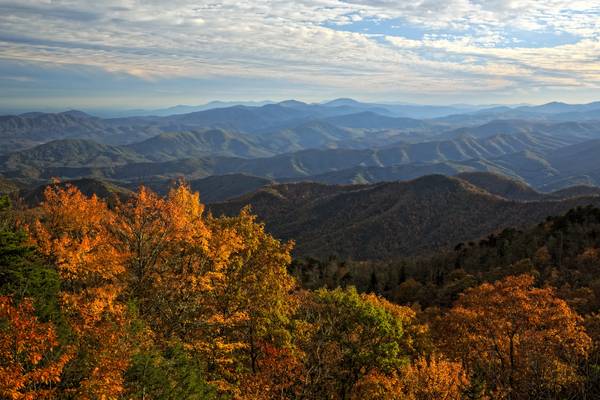
by Michael Kight
Roads? I don’t see any roads.
“Where we’re going, we don’t need roads!”
Perhaps not, Doc Brown, but we have to get there before we can hit the trail, so to speak… headed to the Pisgah area for a week, then off to Linville for another week. There’s got to be a good picture out there somewhere… if you’re in the area, give me shout and I’ll send you my number. Hope to see some of you along the way!
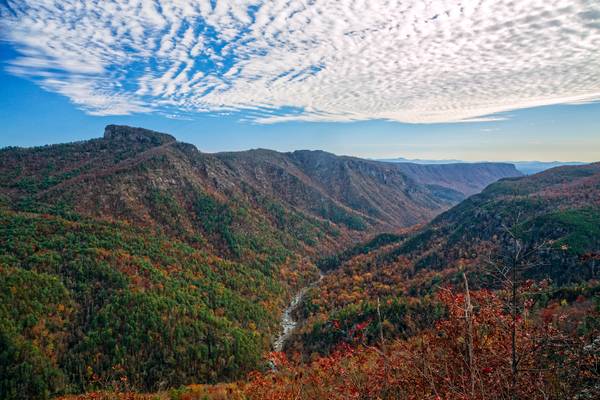
by Michael Kight
I’ve had a lifetime of things just out of reach of my heart… it’s right there within sight, yet it may as well be in another galaxy for what it’s worth. You can’t tell me honestly that you haven’t been there, too. I was in the grocery store yesterday and observed a toddler ensconced in a buggy (a shopping cart for those of you without a southern dialect) hollering her lungs out because her mom wouldn’t let her have what was just out of her reach… I think suppliers of those stores put such items at their eye level for just that reason. “Mom” merely pushed her out of range of the object, but the blubbering continued... she will be inconsolable and forlorn the rest of her life, or at least until the next thing comes along.
I remember a girl from high school who was the most gorgeous woman I had ever seen. I remember she was tall and shapely with long dishwater blond hair and eyes that were so brown they were like dark pools I wanted to drown in. Her family raised Charolais cattle and I just knew I was going to win her over and become a cattle baron. Only one problem… she was out of reach, as were so many other things to come.
As a landscape photographer, I’ve found that same principle is evident, too. I watched many of the best sunsets from the rearview mirror on drives back home from the mountains or the beach. I’ve missed major wildflower bloom peaks by only a matter of days. The weather hasn’t quite worked out. Traffic problems. Not prepared as well as I should have been. The list goes on.
I’ve shot here from Wiseman’s View for years, yet I’ve never quite gotten the shot I had in mind here… until now. This past weekend, I drove my wife and a friend to a church women’s retreat in Valle Crucis here in the North Carolina mountains... after dropping them off, I get lost in those mountains. I always look forward to that, even though it’s rather late in autumn… any excuse to poke around in the mountains for a day or two. Despite the fact many leaves have been evicted by the wind, there was still some interesting color from sunlight filtered through high cirrocumulus clouds. The detail of the ruggedness of this section of the gorge stands out in this image. Table Rock is prevalent here looking off into Shortoff Mountain. That's the Linville River, a quarter-mile below Wiseman's, winding through the gorge. Even from so far away, the roar of whitewater can easily be heard. I’ve finally got the shot I’ve been after for years, so there’s no need to go back… Ha! That’ll never happen as long as I’m able. The next shot may be perfectly different.
As a Christian, I’ve come to know purpose in life… and I believe things happen for a reason. Much as it was for that little girl in the grocery store, some things out of my reach were never intended for me. I recently saw a fairly up-to-date picture of the girl who broke my heart in high school… the passage of time has not been kind to her, perhaps for a number of reasons. That might be said for me, too, though the path of those things “just out of reach” have led me to wonderful friends, a delightful and brilliant wife I love to do things for, and a life I could never have imagined when I was that young fella in high school. Those things just out of reach make you work harder for the life you were meant for. It’s worth it all, so go get it!

by Michael Kight
This gives a more intimate perspective of White Owl Falls than my previous post. Unlike many waterfalls throughout the Blue Ridge, it’s small, yet delicate and lacey, which works well for a shot like this. The rock ledge is perfectly shaped to spread the water out across the entire face of it and down 16-feet in a myriad of cascades. While not as high or powerful as many in this watershed, it’s every bit as beautiful as any of them. Photography on a rainy day only makes it better.
Here’s the total description from the previous post, well worth the time to read: Hidden Beauty. I hadn't been to White Owl Falls for many years before this autumn. That tree trunk left of the falls is the reason why. Fallen from a storm years ago, I found my way down here shortly afterward to find that intact tree occluding the face of the falls, hiding its beauty... but that's not what makes it hidden.
Heading south on North Carolina Highway 281 (Whitewater Road) toward South Carolina, there’s a pulloff on the right that fits perhaps a few cars just past Brewer Road. It’s a short hike from there though not exactly an easy one. The hike gets interesting just beyond the beginning of the guardrail across from the pulloff… there’s no definitive trail from that point. There is a concrete chute, however, that indicates you’re in the right place. Follow that chute down from the road, and be careful, as it can be slippery, and you don’t want to shoot out of the chute! Continue in the same direction paralleling the road, not further down. This seems to confuse a lot of folks, yet the faint trail becomes more evident as you move along it, as does the roar of the falls.
I wore my high Bogs boots on this hike, as I planned to work out every composition I could eke out of White Owl. Fortunately, Thompson River here isn’t quite like the Hudson River, other than the fact it’s wet and it’s a river… I can traipse around the falls in my Bogs without getting my feet wet. It was fascinating to me to be standing amid such beauty while hearing cars whizzing by overhead, with drivers and passengers oblivious to this scene.
The camera got a good workout there and I had other waterfalls to get to in my limited time there in the Blue Ridge. Yet, having packed the camera for the hike out, I just had to sit there and enjoy the reverie of this hidden beauty.
The State Funeral of President George H. W. Bush (41) just ended and the theme of “hidden beauty” throughout it struck me. There are problems here in America, but at times like this, it's evident decency is still the core value of Americans. I teared up along with President George W. Bush (43) as he eulogized his dad… the things he related to his dad spoke volumes about my dad as well, whose funeral I had eulogized a year and a half ago. That was one of the hardest things I have ever done, and I broke down as well… my heart went out immediately to 43 when he choked up, as that’s not weakness... it’s humanity at its best. The issues he stated of note: “He looked for the goodness in others, and he usually found it.” “He put character before pedigree." And, “Hatred corrodes the container it’s carried in.” Would it be too much to ask for Christmas that we all embody these things?
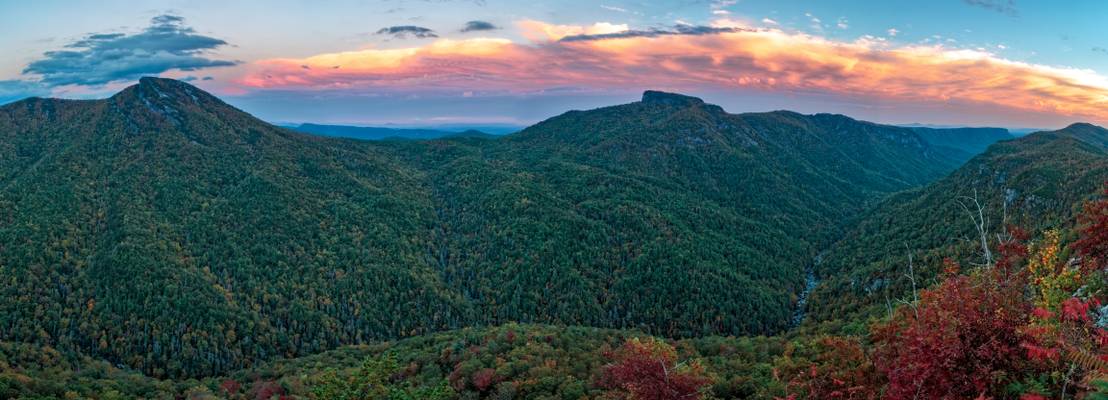
by Michael Kight
It's easy to get big landscape vistas out west... here in North Carolina you have to work for it. I've wanted to get a sweeping panorama of Linville Gorge for some time... this one fits the bill for "sweeping" while keeping the perspective in check through the use of a 24mm tilt/shift lens. The image is an amalgam of 7 vertical images seamlessly stitched in Photoshop ACW... yet, it's still difficult to convey the immensity and wilderness that is Linville.
The photos were taken from a leveled tripod off the lower overlook at Wiseman's View, which is likely as good place as any for such a shot of the gorge. Another favorite destination, Hawksbill Mountain, is seen directly across from here. Imposing Table Rock, another well-known denizen of the gorge, is seen just to the right of Hawksbill... can you perhaps see how they got their names? Off in the distance between the two is the much lower stretch of Brown Mountain, famous for the mysterious Brown Mountain Lights, though the phenomenon is just as prevalent, if not more so, right here. Linville River divides the gorge some 1,400 feet (427 meters) below.
Night is drawing fast here, though the Sun seems to be getting in the last word. It bathes the rounded boundary of the approaching high storm in colorful light... and leaves enough light for some detail of the gorge. It's not quite peak of autumn where I'm standing here, though the scarlet of the black oaks and the brilliant red of the sumac would have you believe otherwise. Color is showing itself, though only on the high peaks, as is normal for the Blue Ridge... once it reaches peak color, it moves down at about 100 feet per day. Also as is normal for this region is that the wind is notorious for stripping the colorful leaves often before they reach peak season.
The gorge is a true wilderness... so few throughout history have bothered to homestead it, largely due to that fact. In some places, the only evidence that anyone ever lived here are daffodils that were first planted long ago. It is home, however, to squirrels, chipmunks, bats, fox, coyote, deer, bear, more than 250 species of native and migrating birds, lizards and snakes, including the most oft seen timber rattler… watch your step around here.
While this skyline is quite familiar to many who drive along the Blue Ridge Parkway, I find so few who know how to get to this particular place. To find it, make your way to the little community of Linville Falls between highways 221 and 181... Highway 183 connects the two. There's a big sign at the back entrance to Linville Falls (the actual waterfall)... that's Old NC Highway 105, also known as County Line Road. Follow that for four miles until you reach the spur for Wiseman's View, which is marked. Be aware it's a dirt road, and often it's passable by only AWD or 4x4 vehicles with high clearance.

by Michael Kight
This is the top tier of Whitewater Falls in the North Carolina Blue Ridge. If you get there at the right time, you can catch a nice rainbow in the mist below. The remnant of Hurricane Ida has been blowing through here the last few days dumping a horrendous amount of rain as it goes... this picture would look quite different today, no doubt.

by Michael Kight
Today is a day of rest for me after two weeks of putting the mountains of North Carolina in front of the camera… it’s a tough job, but somebody has to do it. I’m trying to maintain my health, although my fast approach to the tender age of 61 makes me wonder how much longer I’ll be able to traipse these elevations under 50 lbs. of gear without the aid of Sherpas… any takers out there? I shot alongside Sharon www.flickr.com/photos/52399662@N05/ on Rough Ridge at sunrise last week… she’s around my age and weighs likely 98 lbs. soaking wet, carrying similar gear… and she’s a true motivation for me. That being said, she’s probably thinking about Sherpas too.
I was pretty excited when I checked long-range weather after Hurricane Joaquin blew its way out of the state… every source I checked showed either mostly cloudy or partly sunny days for the regions I was headed to… in other words, perfect days for the nature photographer. When I arrived, however, the forecasts changed to absolutely brilliant sunny, totally cloudless days most every day. That wasn’t the only thing going wrong for my photographic foray… there were more people taking advantage of those clear days than I’ve ever seen before, especially along the Blue Ridge Parkway.
As do most photographers who have to contend with that kind of light, I know early or late are the best times to shoot. I had a friend along earlier the day before this who wanted to see a waterfall, and there are none better in the area than Linville Falls near milepost 316 on the Blue Ridge Parkway. She had left Durham about 4am Saturday to be there early… after breakfast and a short rest for her, we headed straight for the falls… where I got a good illustration why early and late applies to people as well as light. Once we got there, it quickly became clear that alternatives were necessary. I was amazed that both the upper and lower parking lots were mad houses, with many folks parked roadside (both sides) more than ¾ of a mile away… with more coming! I wondered just where in the world all those folks came from... turns out that was the answer, as I talked to people from all over creation! It was beyond capacity even if we decided to strike out for the falls regardless. Boone Fork and Elk Falls became better options.
Don’t misunderstand me here… a good dose of the outdoors does a body good, and I appreciate that folks find a good reason here to get out of the house. Thankfully, the “nature” they most respond to is their stomachs, so when supper calls, they vacate the highlands in droves… which left me to my own devices here Sunday night. I set about every composition that came to mind here. The dark hike back up the trail left me plenty of time with this composition in mind... to show the autumn grandeur of the basin as the Linville River begins to work its way through the gorge. It turned out better than I thought it would. This is 9 vertical images combined in Photoshop CSS 2015 ACR, rendering a detailed panorama of 8 feet by 2 feet, though it can go larger. Who needs an image bigger than that? A better question might be who needs to cover some big wall space?
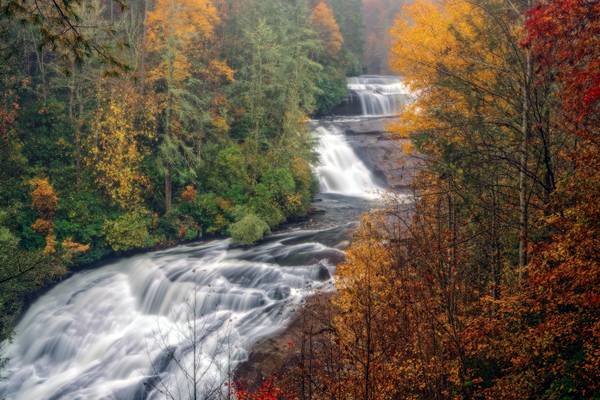
by Michael Kight
“Talking to myself and feeling old Sometimes I'd like to quit, nothing ever seems to fit Hanging around, nothing to do but frown Rainy days and Mondays always get me down”
If you know those lyrics, you’re doing the same as me… dating yourself. Rainy Days and Mondays was the Carpenters fourth number 1 song for the Adult Contemporary Singles Chart and went as far as #2 on Billboard’s Hot 100 in 1971. I was a sophomore in high school at the time and though this was far from a favorite song for me, I loved Karen Carpenter… from afar (read last post).
Life’s experience has led me to deeper more tangible loves since then. One of them is realizing that rainy days are the absolute most wonderful days to shoot waterfalls that have a canopy to keep the sky out of the frame. It just so happens I managed this image on both a rainy day and a Monday. Apologies to the Carpenters (Karen has long since passed), but bonus for this shot!
This is aptly named Triple Falls at DuPont State Park near Brevard here in North Carolina. Autumn color this year in the high regions of the Blue Ridge was not its best throughout the season. I cruised the high ridge just to observe and found the sleepy forest there nodding its head to the winter. The lower elevations, though, were quite surprising, as evidenced here. I had rain gear as I hiked the trail up. I was stoked by the by both the vividness of the forest and the bit of mist kicked up by both the falls from the Little River and the rain. I wasn't disappointed once I reached the top.
That said, I was partway into my shoot here when another fella dragged himself up the trail. The first thing he did was grumble about the conditions that I thought were terrific. His argument was that the mist would take away from the sharpness of his pictures. That's not obvious here to me. I didn't argue with him. He just harrumphed at my obvious joy and hiked on. I wished him happy shooting, which elicited another harrumph! I couldn't help thinking he must have been listening to the Carpenters on the way to DuPont. I hid my grin from him to keep from ruffling him any further as I joyfully applied my reverie to this scene... I hope it's obvious.
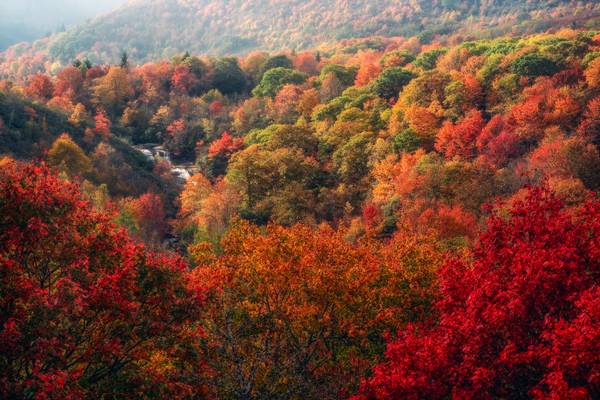
by Michael Kight
Physics has always been of interest to me. That may be because I know how many things work, and physics gives the understanding of how everything in nature works. I can repair most anything, from cars, to computers, to plumbing, to electrical systems, and even air conditioners… my wife is quite happy about that. Likely more because of a touch of ADD than straight out insanity, I’ve never had a fear of trying new things… a sense of wonder has always drawn me further into many things that others have dreaded to tread… “dread”, “tread”, it’s a gift, I don’t talk about it much.
Have you ever truly watched young children at play? They dwell in wonder! Yet, as they grow older, that sense of wonder tapers, sometimes to the point that it disappears altogether to a jaded disposition of adulthood. Someone once humorously quipped that life consists of four stages. In the first stage, we believe in Santa Claus. At the second stage, we no longer believe in Santa Claus. The third stage is when we find out that we are Santa Claus. The fourth and final stage has arrived when we look like Santa Claus. Some years ago, I was in a church choir in Cedar Grove, North Carolina, and sat next to a local farmer who not only was a professional Santa Claus, but was also the spitting image of the classic Coca-Cola Santa Claus… so I am still in that first stage in life! Occasionally, “Santa” would fall asleep during the sermon and start to snore, understandably so at that particular church. I always woke him gently, so as not to be on the “naughty list”.
Have you wondered about wonder? Wonder is that place of the mind that charms the emotions while never conceding reason. It is a grasp on reality that does not need constant highs to be preserved, nor is it weakened by the low points of life’s struggle. It sees in the ordinary the extraordinary, and it finds in the extraordinary the reaffirmations for what it already knows. Wonder interprets life through the eyes of eternity while enjoying the moment, but never lets the momentary vision exhaust the eternal. Wonder makes life’s enchantment real and knows when and where enchantment must lie. Wonder knows how to read the shadows because it knows the nature of light. Wonder knows that while you cannot look at the light you cannot look at anything else without it. It is not exhausted by childhood but finds its key there. It is a journey like a walk through the woods, over the usual obstacles, and around the common distractions while the voice of direction leads, saying, “This is the way, walk ye in it” (Isaiah 30:21 KJV). Wonder cannot help but sing… even nature recognizes that.
Here, from an image taken in 2015, some favorite familiar objects stand out in wonderful ways… the extraordinary in the ordinary, yet to me, it’s never ordinary. That’s a bit of Second Falls there as seen directly from the Blue Ridge Parkway at Milepost 418.5… it's a good bet I'll make a stop here every fall and frame a shot with these three brilliant maples in the foreground. Just beyond the falls is Graveyard Fields, where the first of autumn colors are most prevalent in early October. I know how this works, too… the sun no longer beats down on this landscape as it did throughout summer and the nights become longer and much cooler. Eventually, the ground temperatures drop, triggering the autumnal effects on the leaves of a myriad of flora. The color that first appears at Graveyard Fields (elevation 5120 feet, or 1560 meters) drops in elevation about 100 feet per day. Knowing, however, only deepens my sense of wonder at this beautiful wall of fall (as I said, it’s a gift).
Fall colors have been slow in coming this year with warmer nights in the mountains. Hurricane Michael is bearing down to this region from the gulf as well, so many here are hoping the leaves won’t soon be gone with the wind. By the way, this year has seen Hurricanes with my mother’s name, Florence, my wife’s name, Joyce, and now one with my name. What’s up with that? I wonder.
Thanks to all Phoide contributors to North Carolina!
Most notably Michael Kight and George Kurzik.





